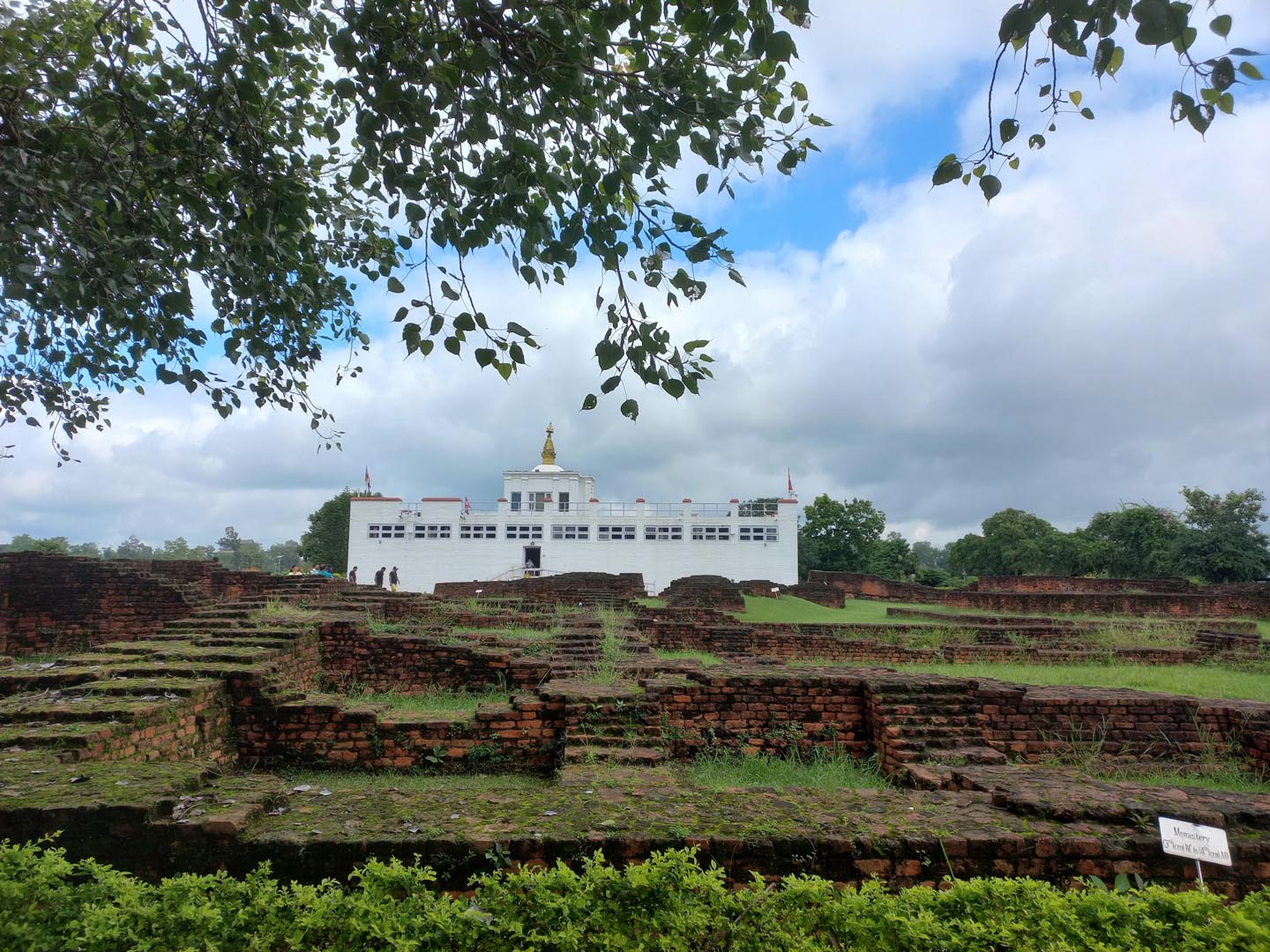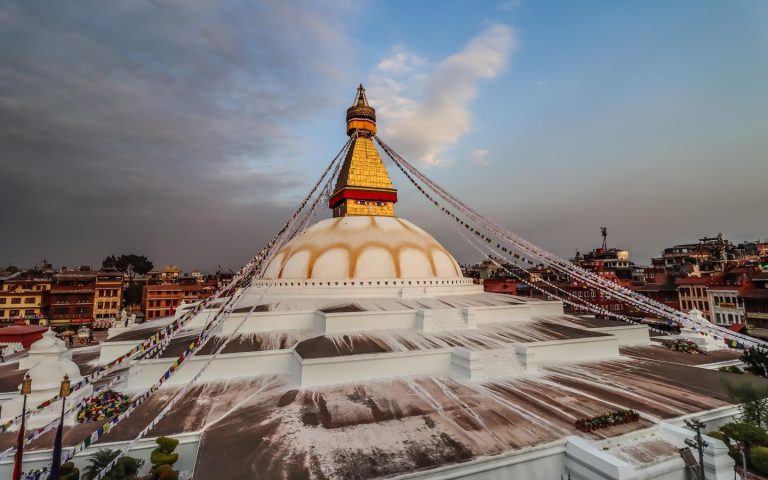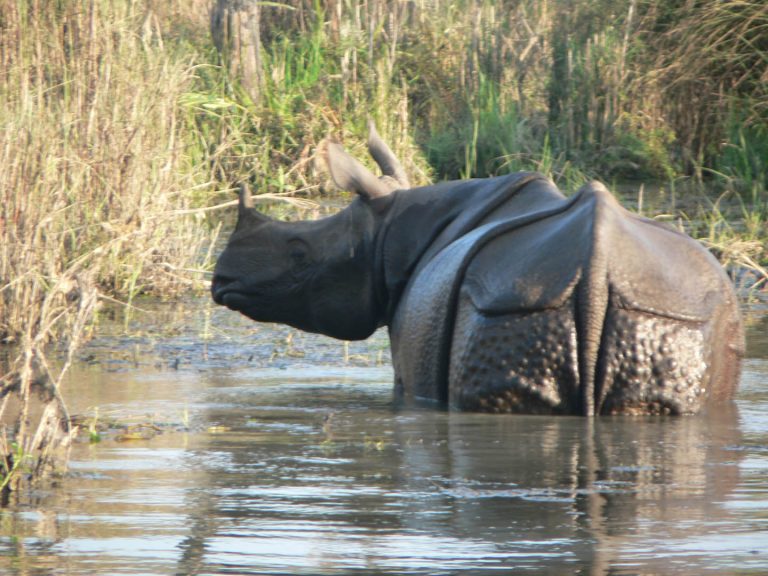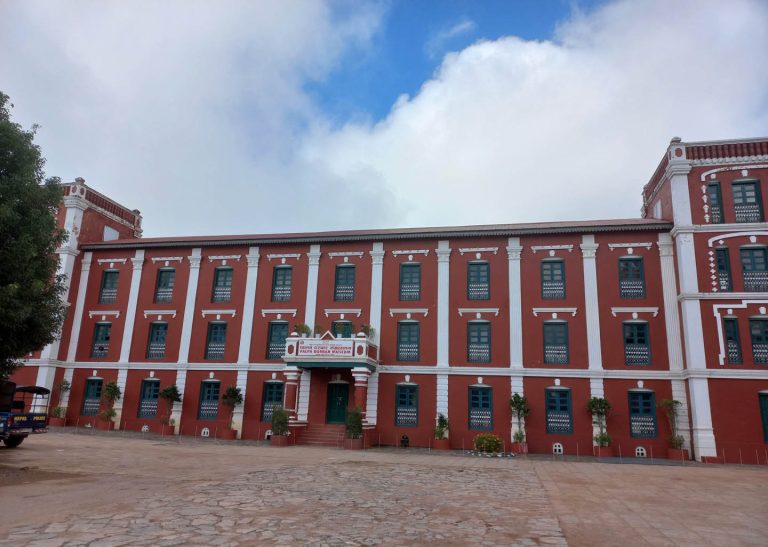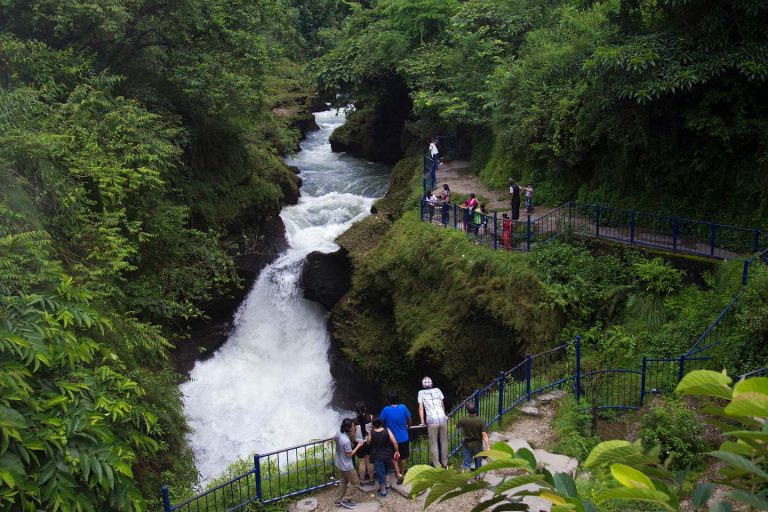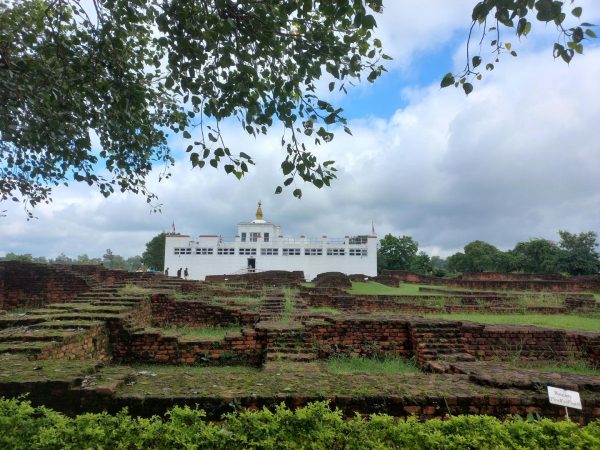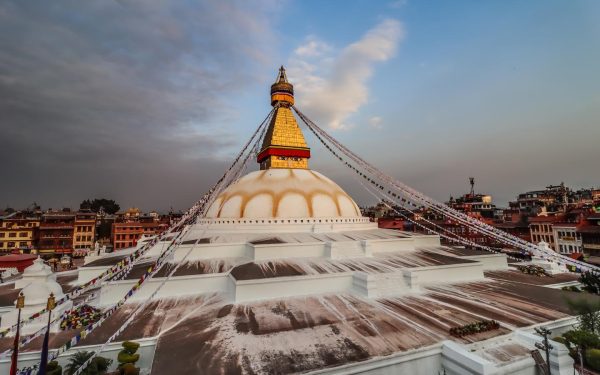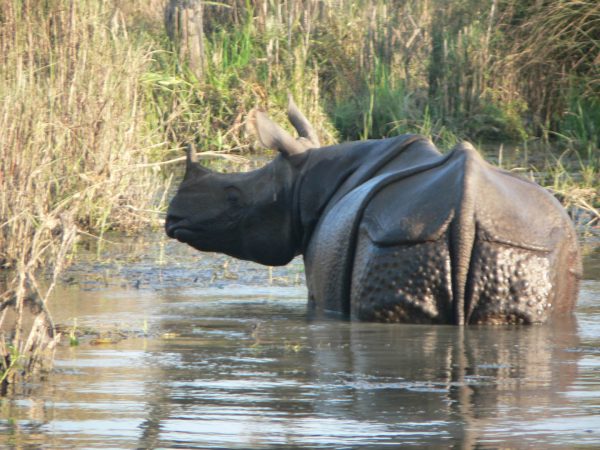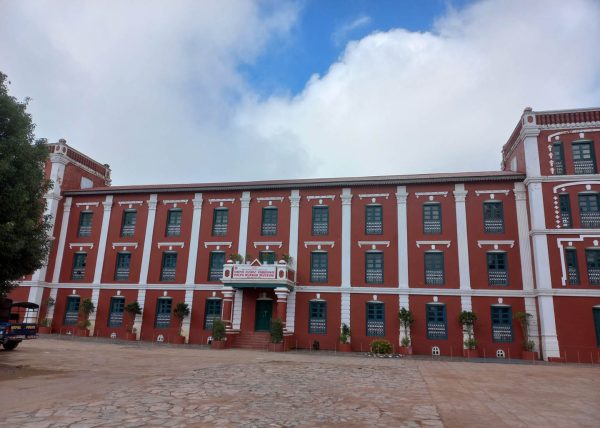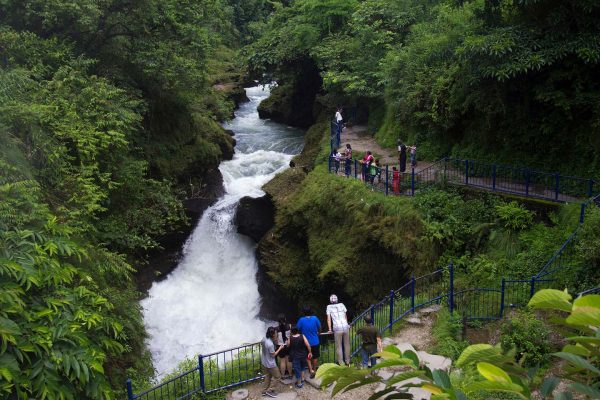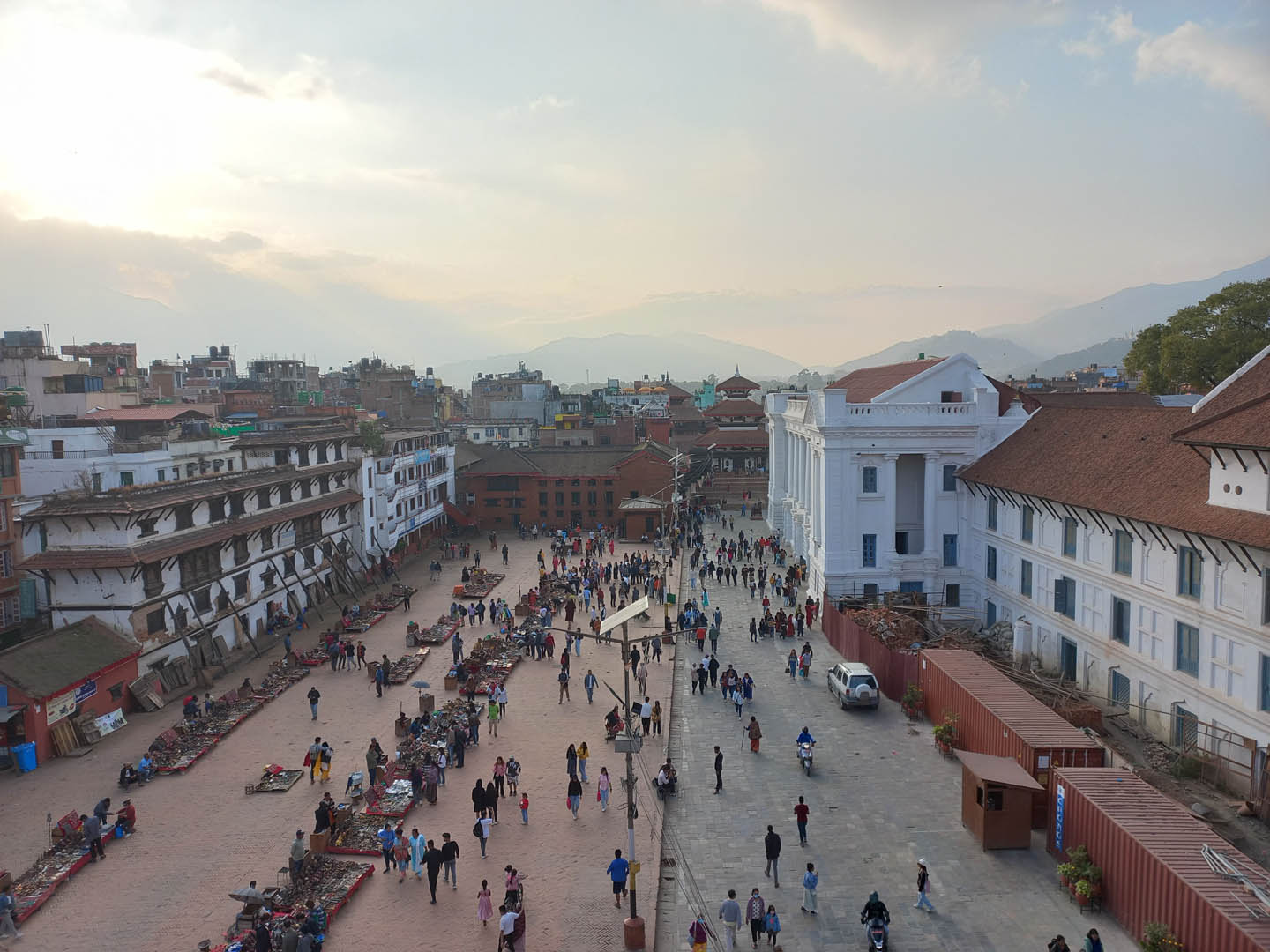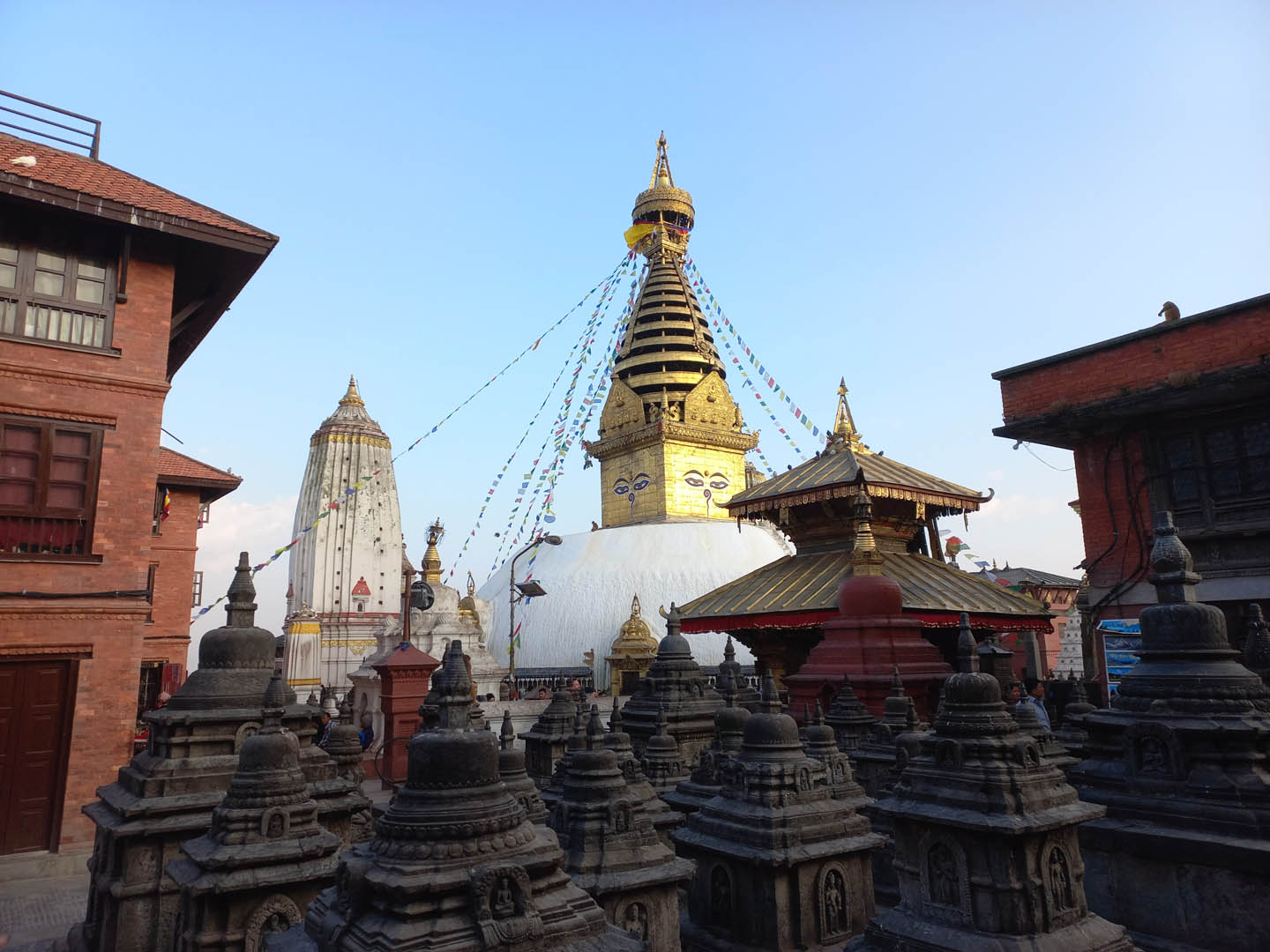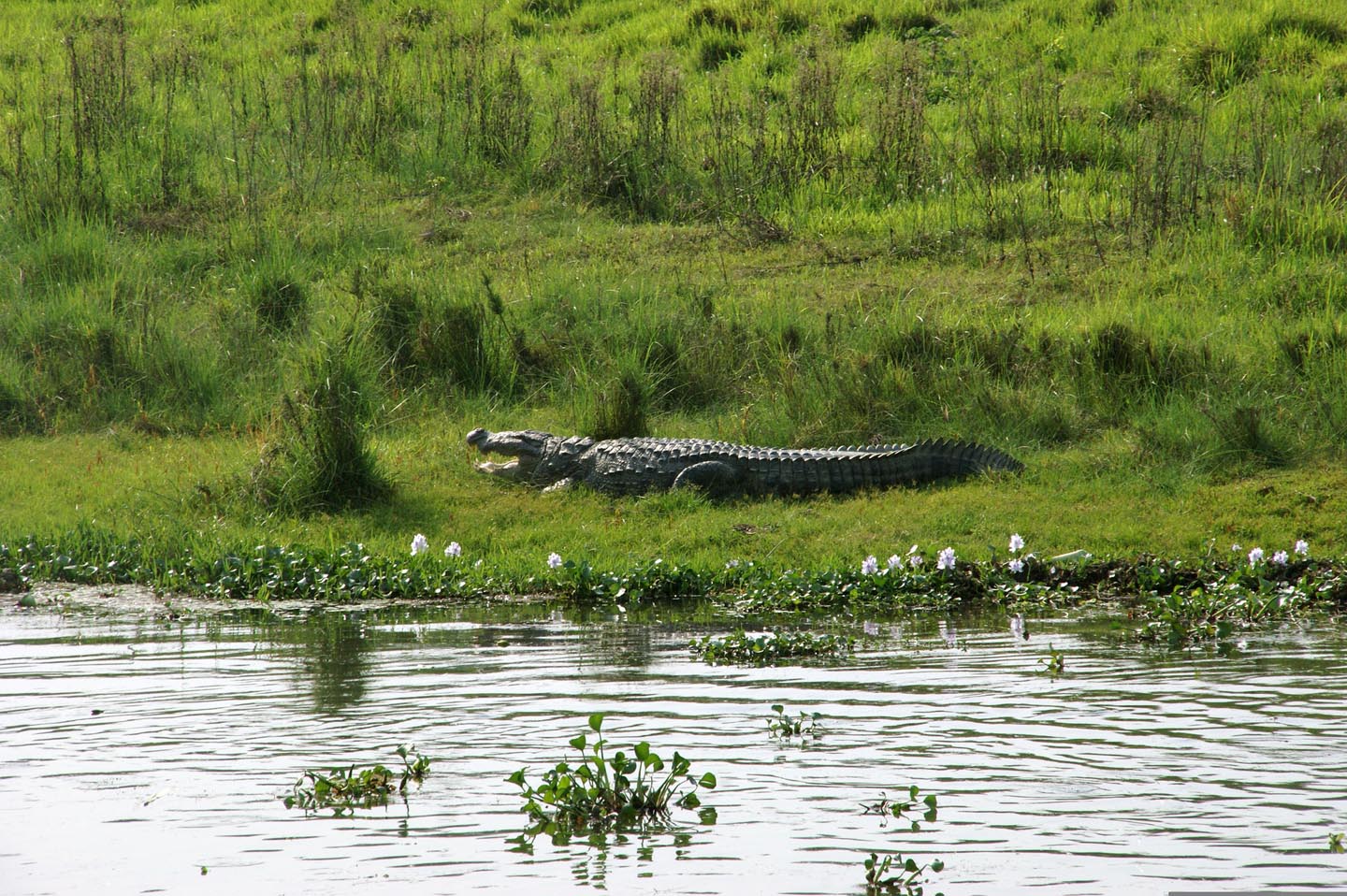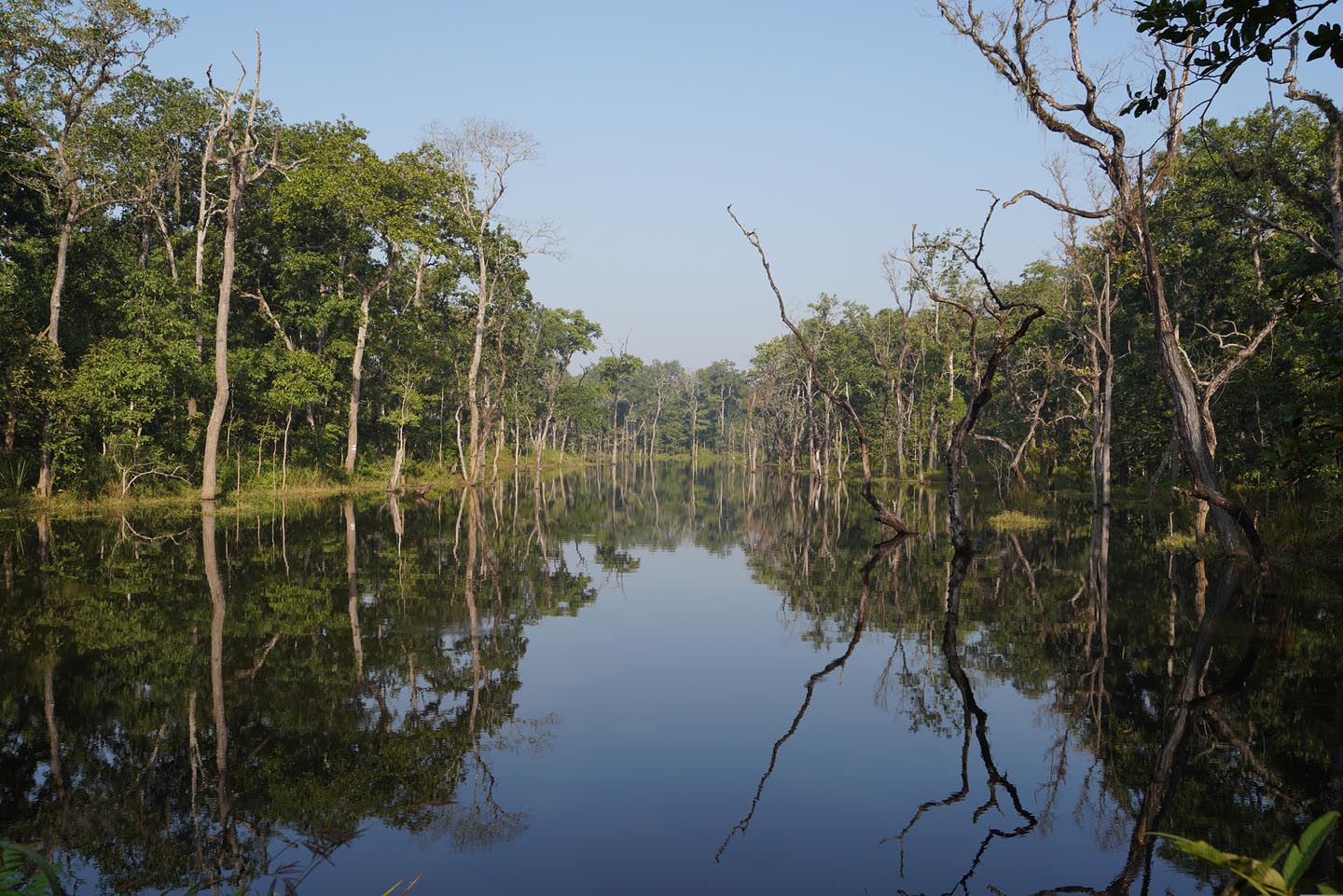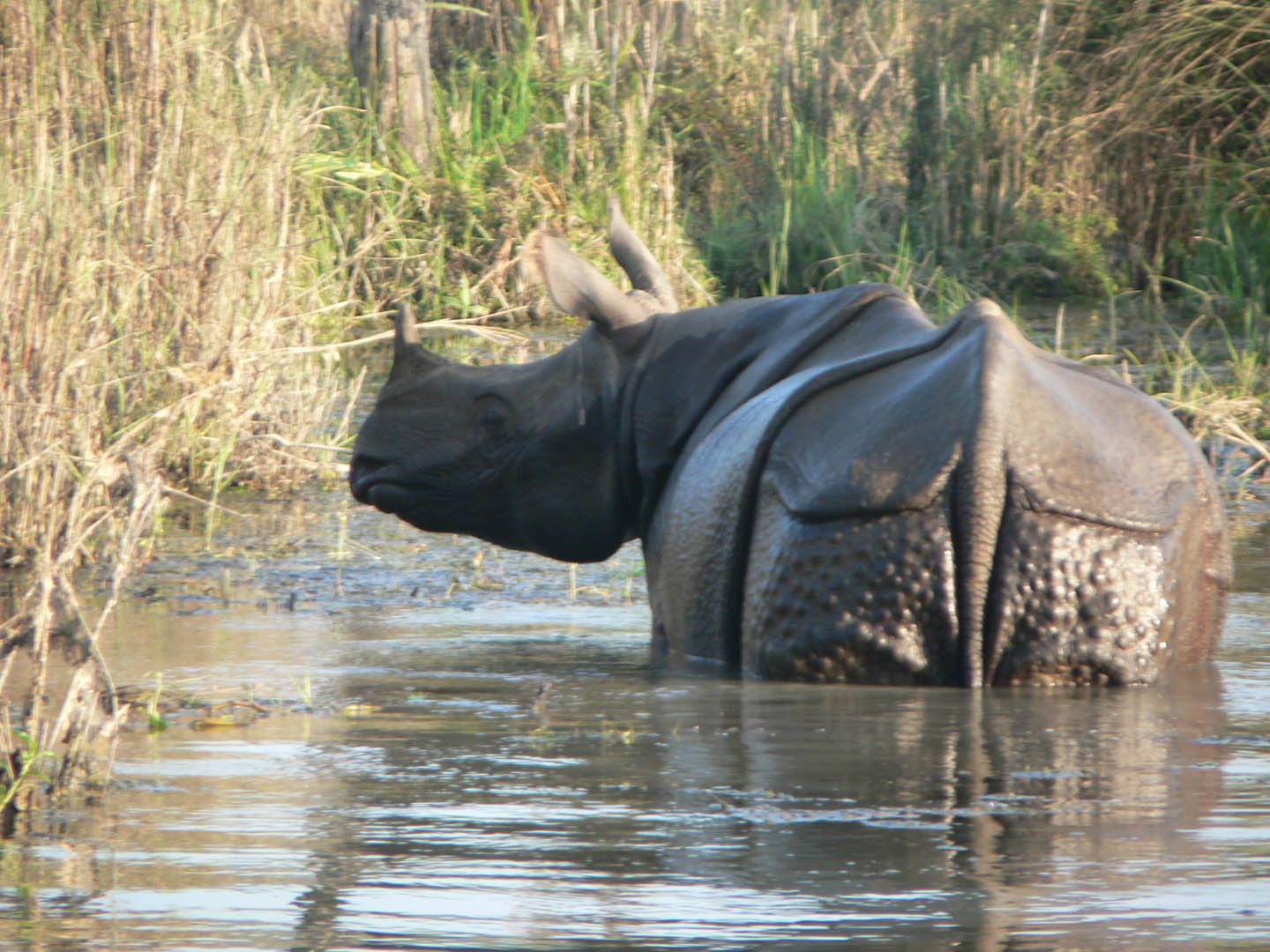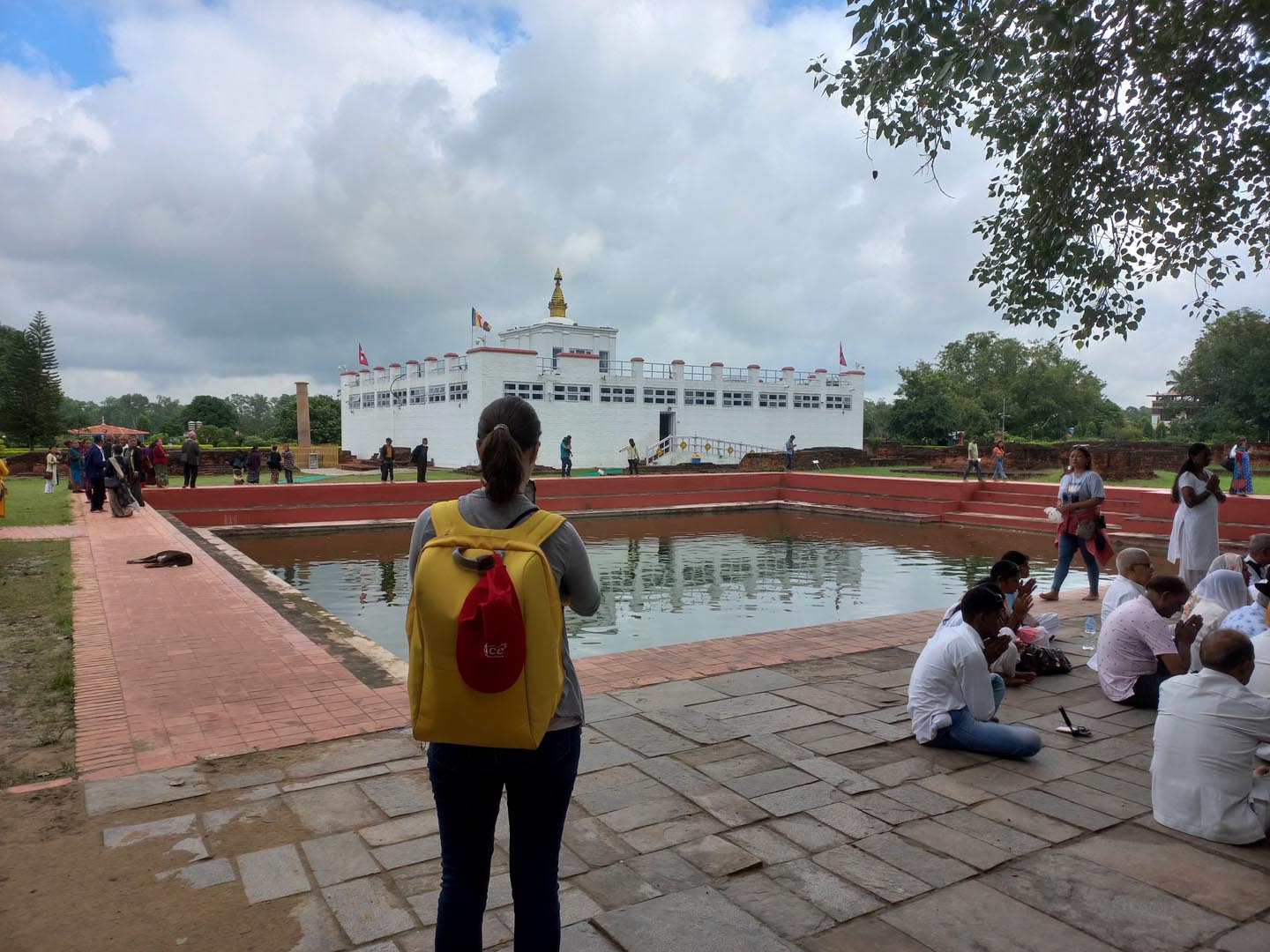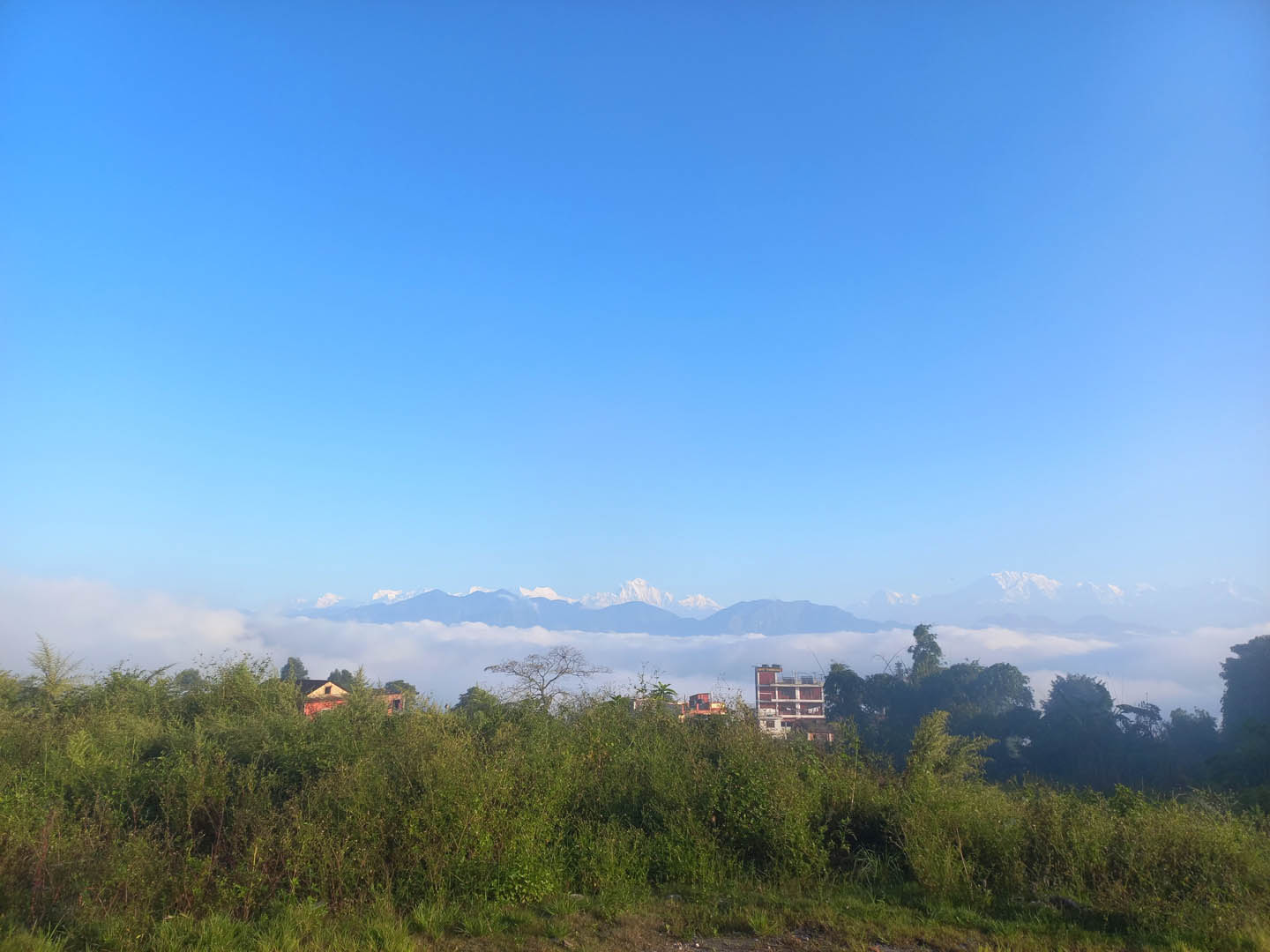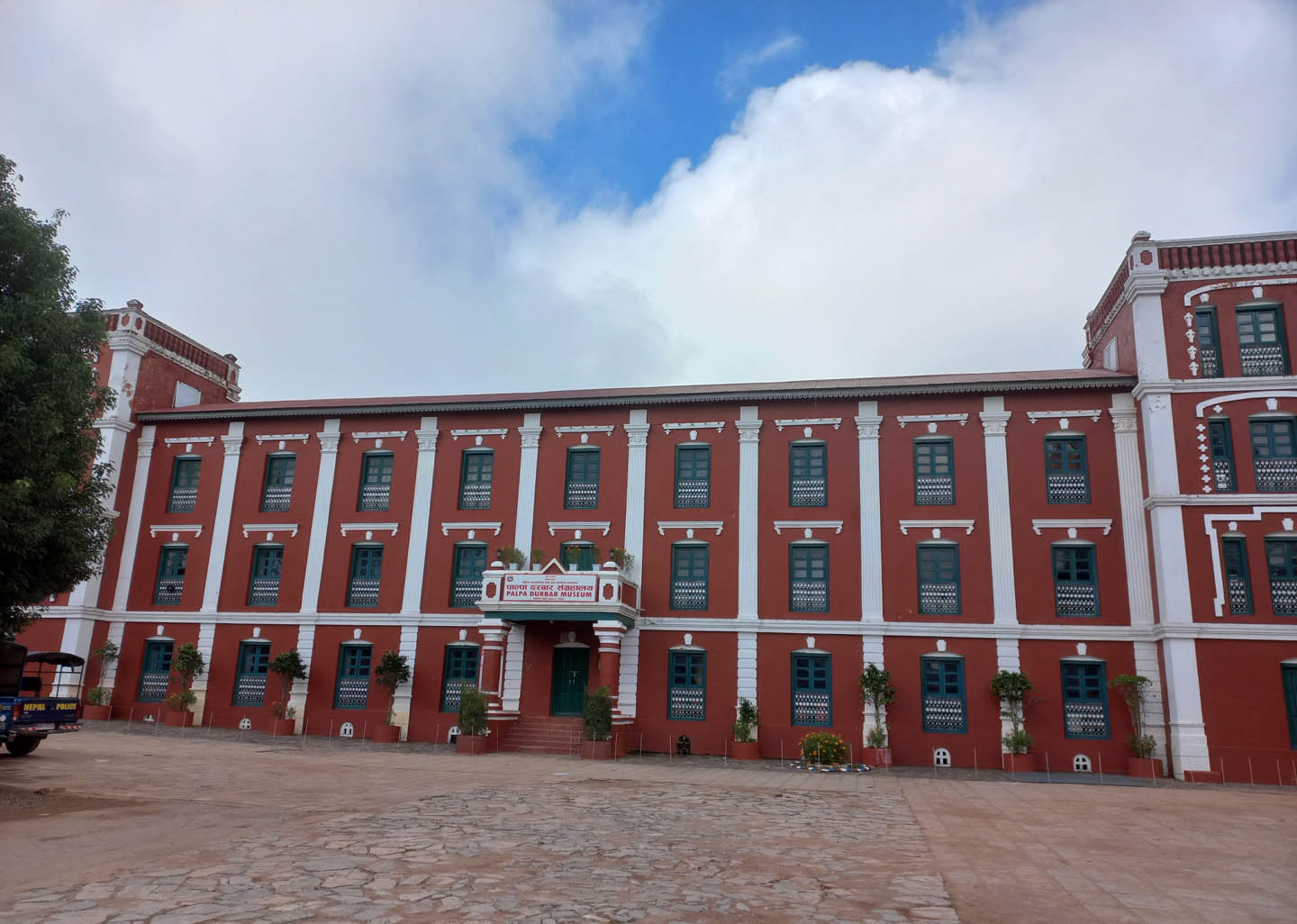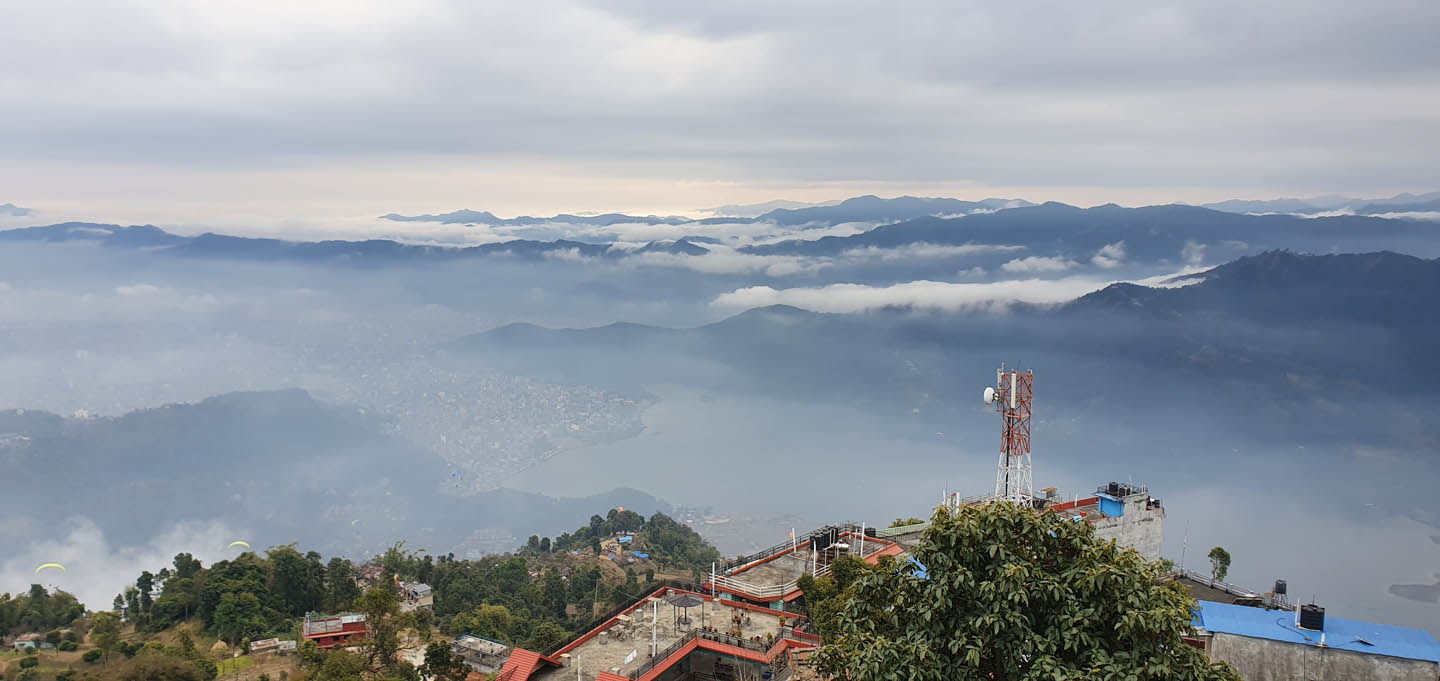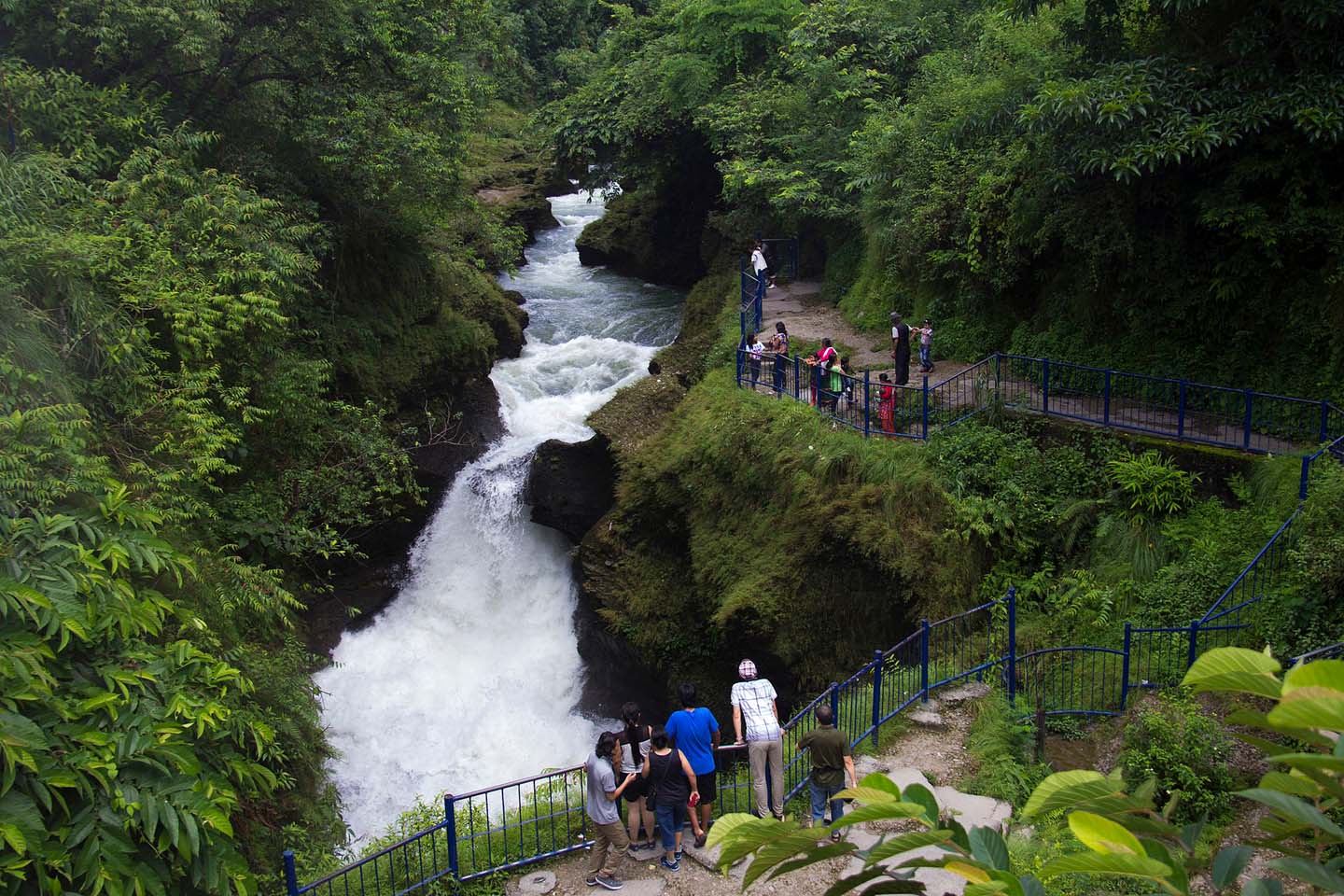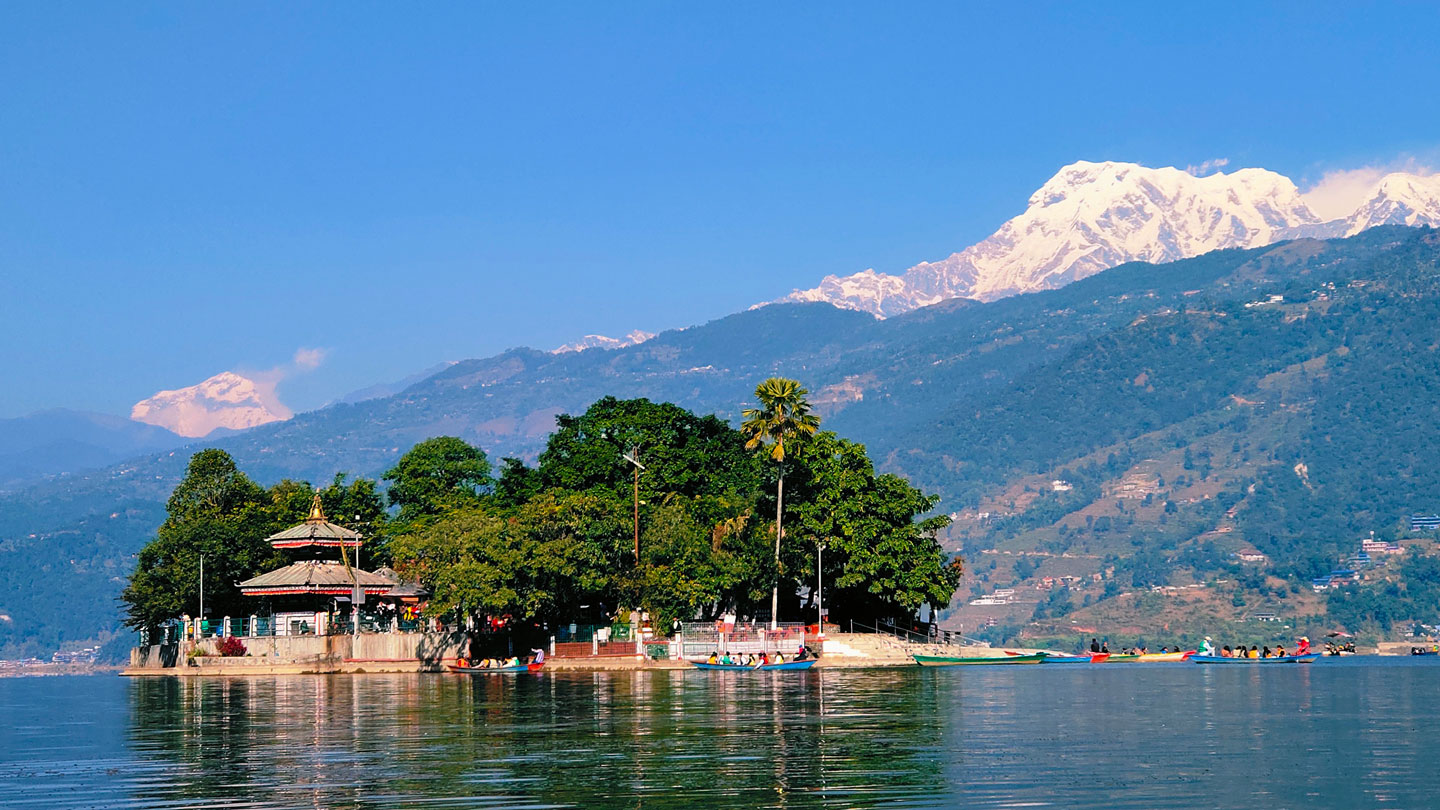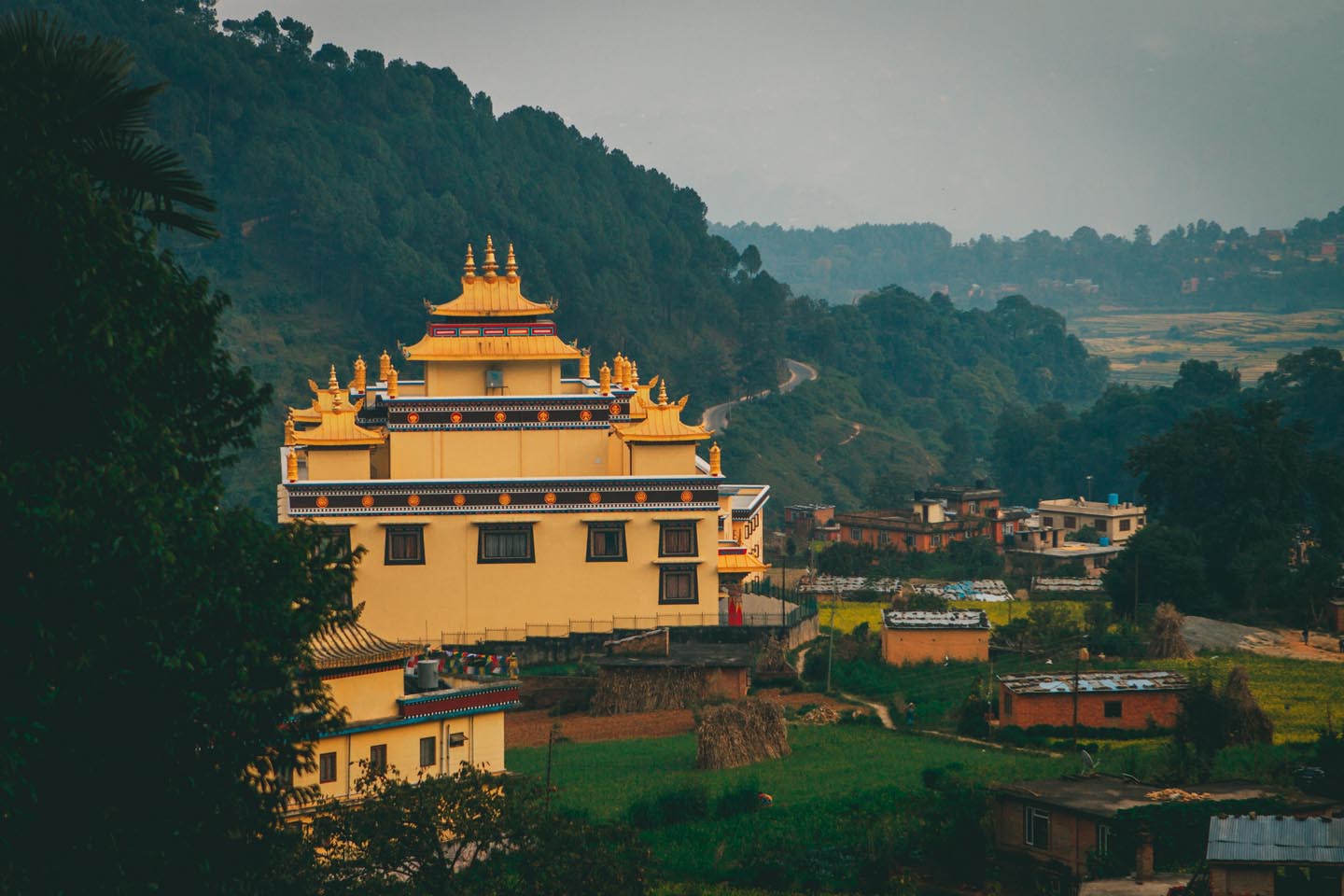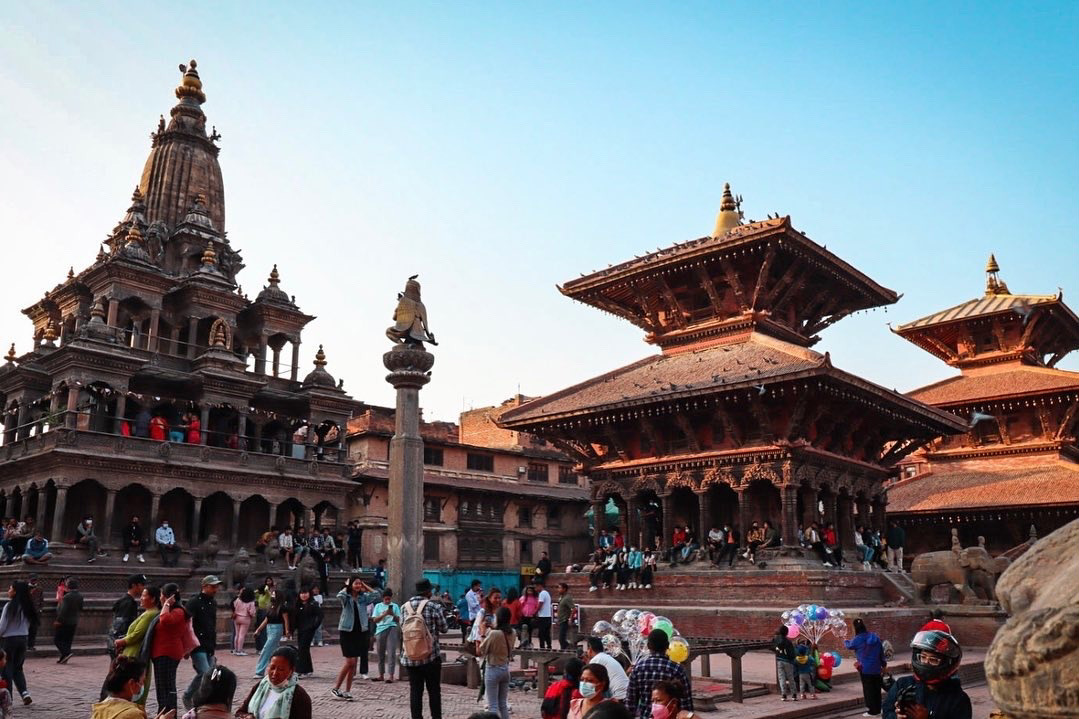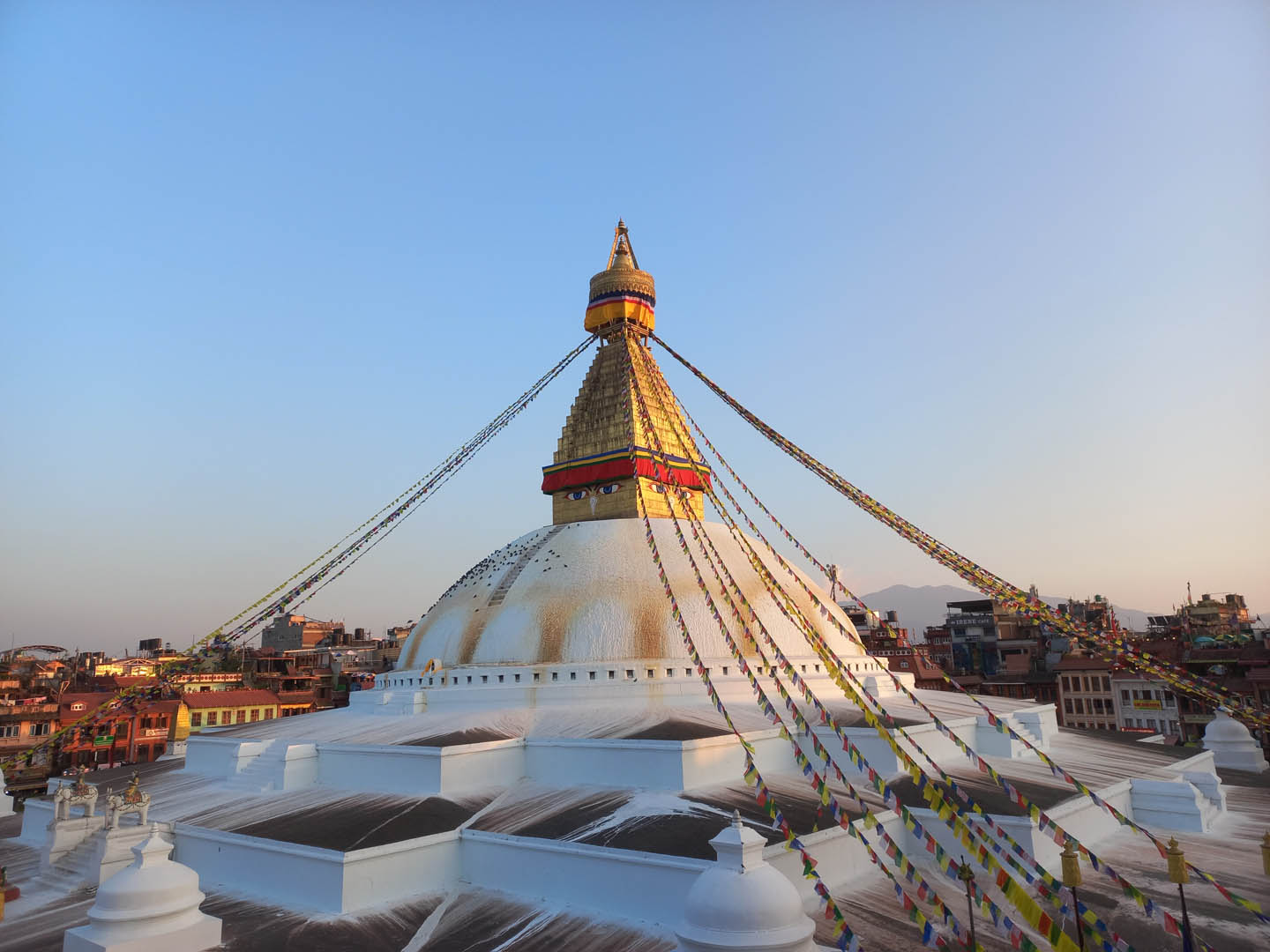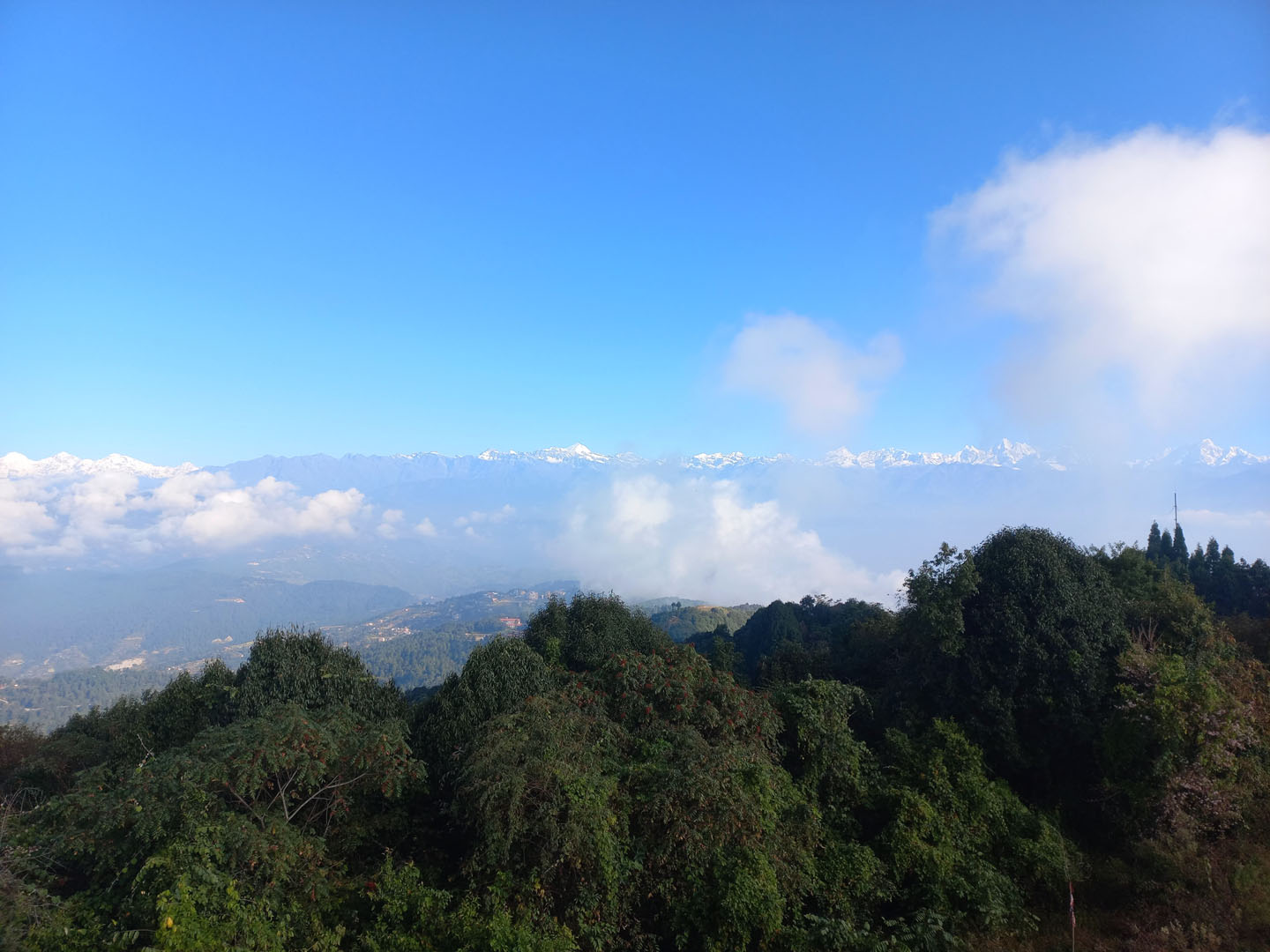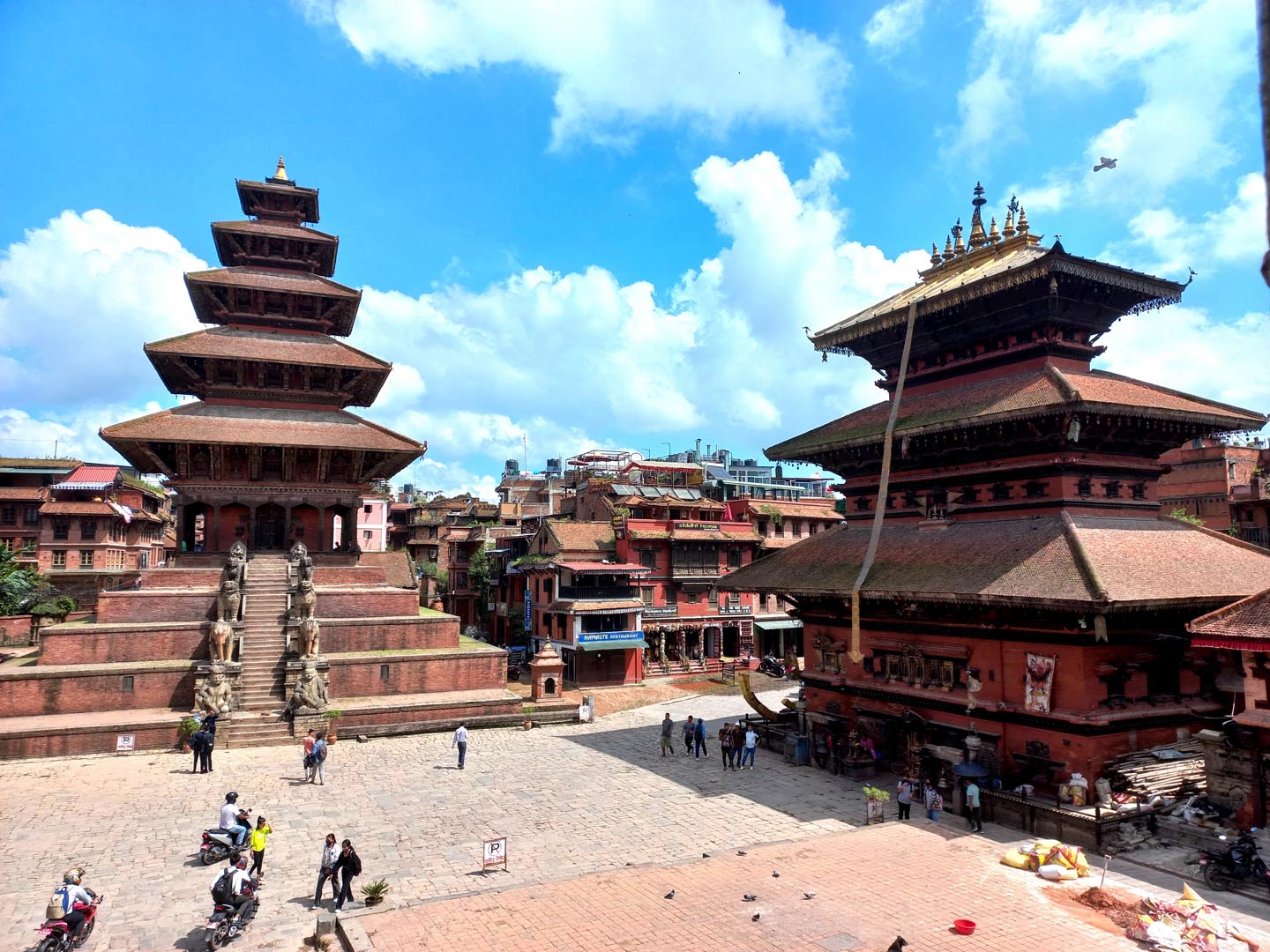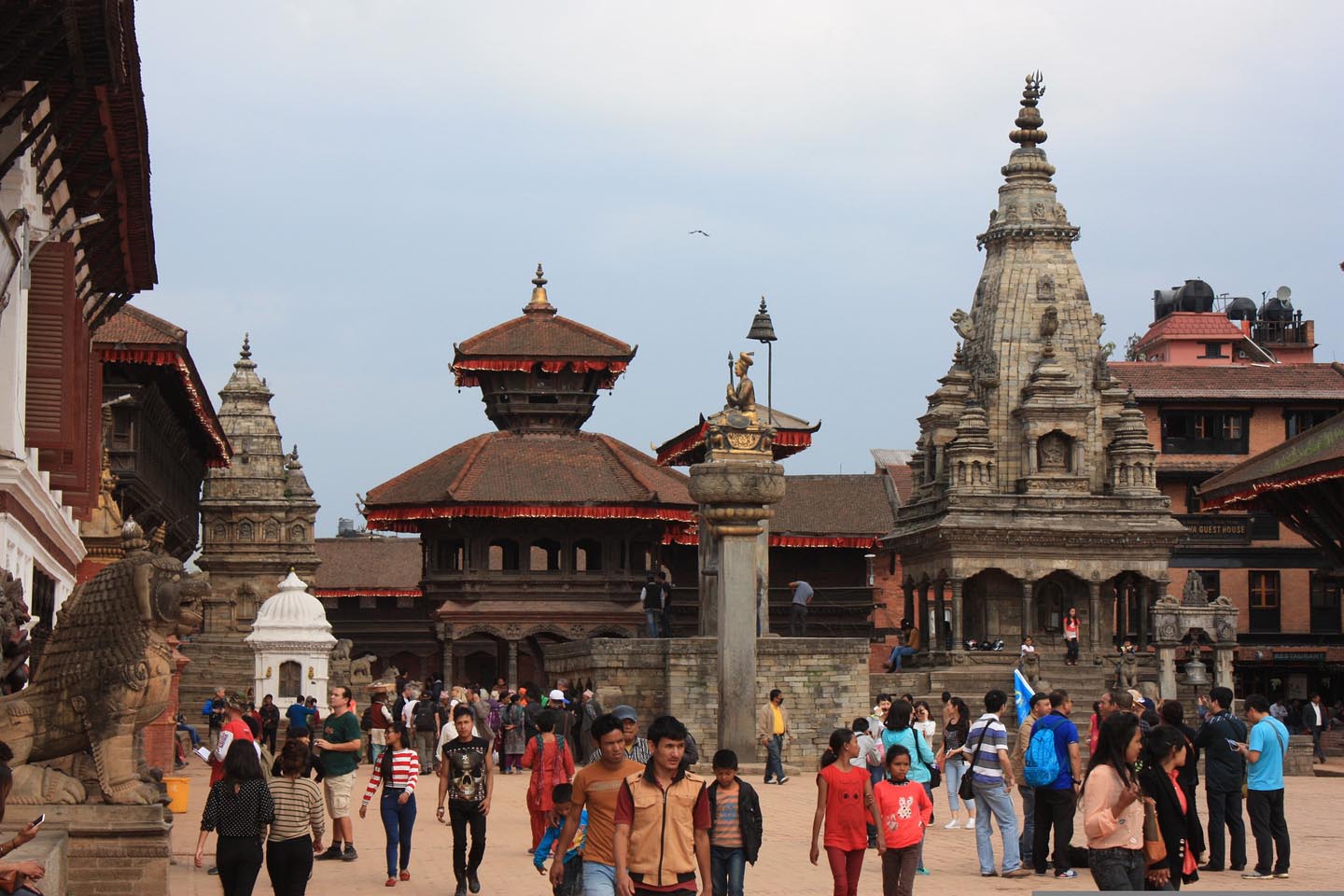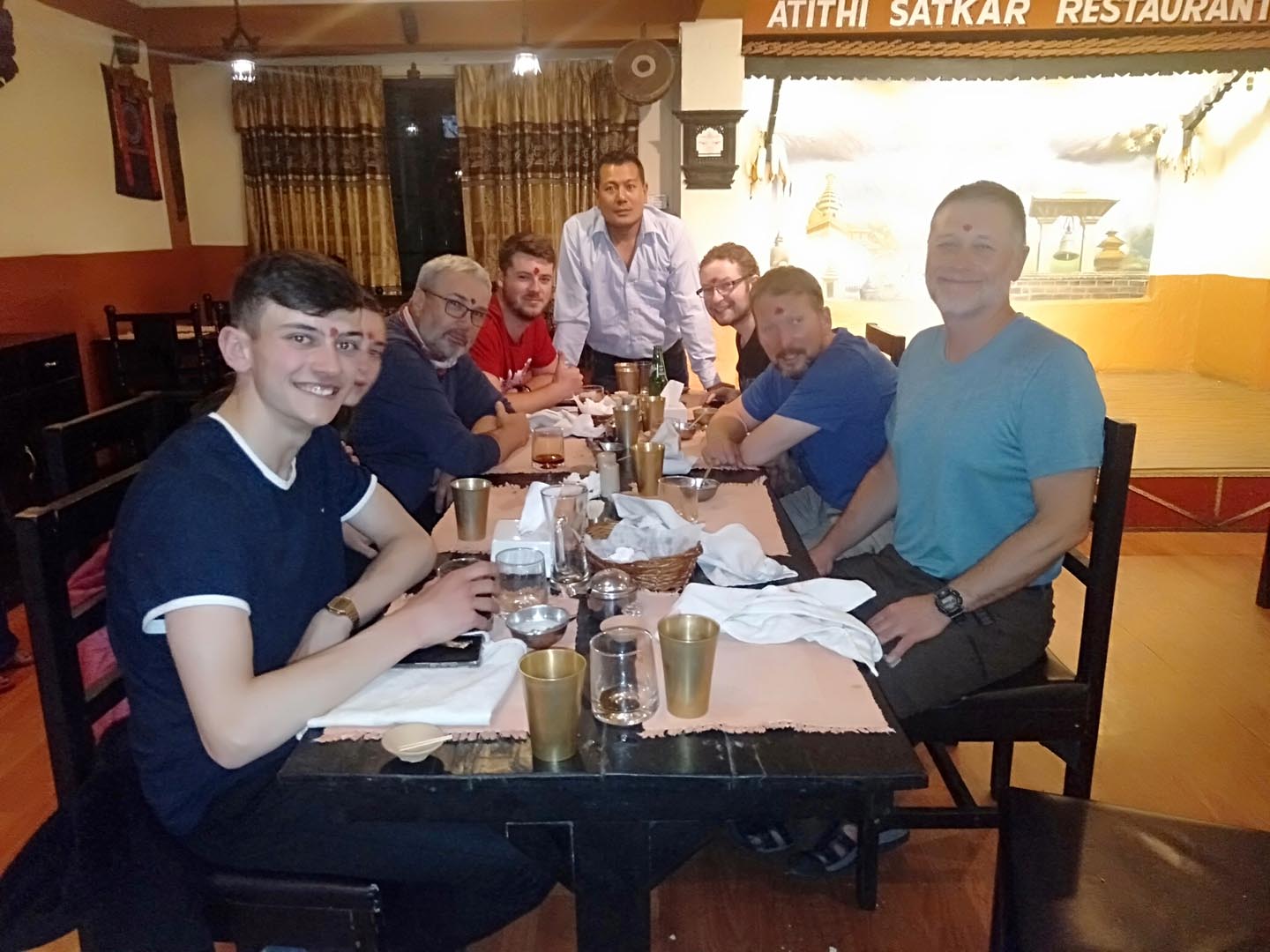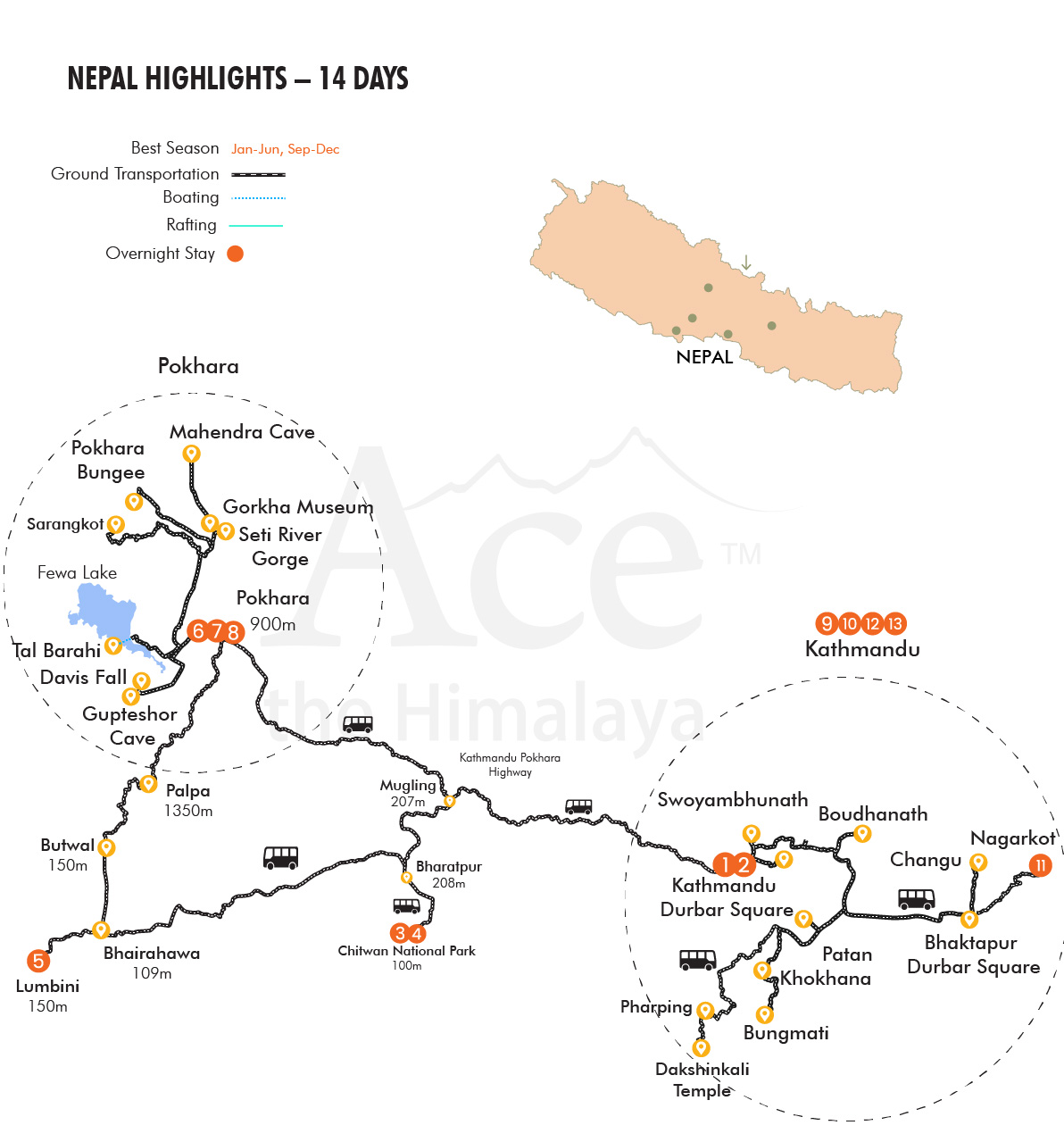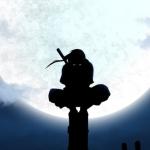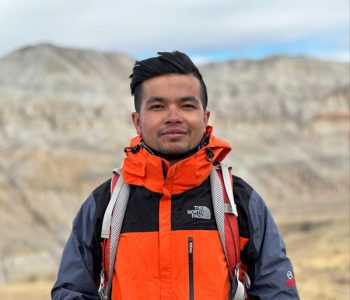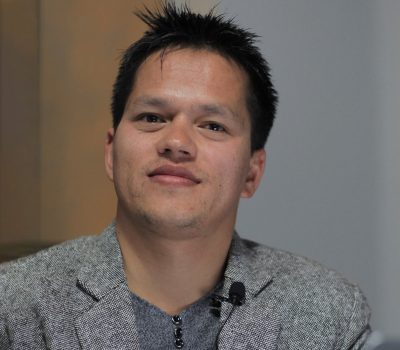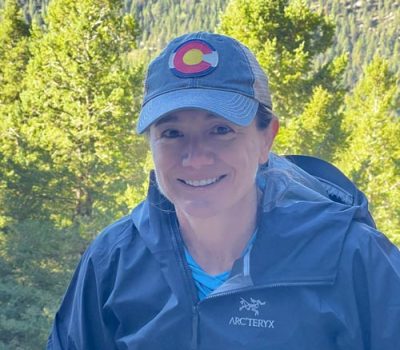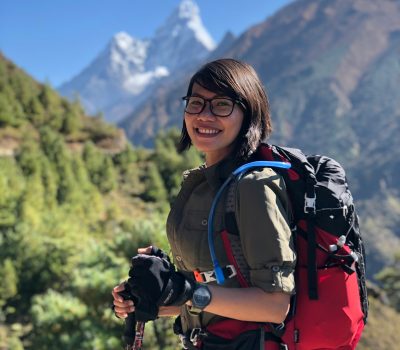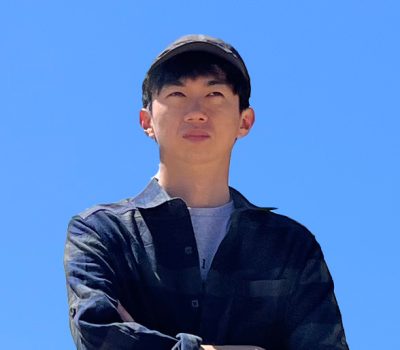Nepal Highlights - 14 Days
Discover the magic and mystery of Kathmandu before heading to Chitwan National Park, one of the best wildlife viewing places in Asia; Lumbini, the birthplace of Buddha; and Pokhara, the most beautiful city of Nepal.
Trip Highlights
- Guided city tours in Kathmandu, Patan and Bhaktapur.
- Guided village sightseeing in Pharping, a Newari Heritage Town.
- Panoramic views of the Himalayan range and sunrise from Nagarkot & Sarangkot.
- Floral tour at Godavari Botanical Garden.
- Jungle safari in the Chitwan National Park.
- Discover the scenic cities of Pokhara and Tansen.
- Visit the birthplace of Lord Buddha – Lumbini.
Trip Overview
Discover Kathmandu’s distinctive and unusual Newari culture in Nepal Highlights Tour. Get lost in the crowded streets, heritage-listed ancient structures, magnificent temples, and imposing Buddhist stupas. Take a leisurely trip to the Nagarkot hills to witness an amazing sunrise. It is the ideal location to see the Himalayan greats, including Manaslu, Ganesh Himal, Gauri Shanker, and Mount Everest.
Safari excursions at Chitwan National Park include jeep safari, canoeing, and bird watching. Surrender to the pure pleasure of jungle activities. You may catch a brief sight of some of the rare animals with the help of the tracking skills of our guides. We explore the park looking for rhinos, tigers, elephants, wild boars, and the masses of beautiful birds living here
We travel to Lumbini, the birthplace of Lord Buddha, known as the “Light of Asia” and an advocate for peace. It is one of the holiest locations and contains crucial information on the characteristics of ancient Buddhist pilgrimage. For the many millions of Buddhists around the world, Lumbini, located in the Terai region, has a sacred feeling. Believing how Mecca is to Muslims and Jerusalem is to Christians.
Tansen, the capital of Palpa, where the Sen Kingdom was based, is around 330 kilometers from Kathmandu. The town has several fairs, festivals, religious gatherings, and other activities typical of traditional and historical Nepal. The Palpa district’s natural splendor is extremely breathtaking. Tansen’s main draws are Srinagar Hill, Tansen Bazaar, the Palace that dates back hundreds of years, and Ranighat. Tansen is a little town, but it is brimming with cultural, historical, and natural wonders.
It is located in a serene valley and offers a tropical atmosphere. The lovely variety of flowers that blossom all over justifies this truth. There are countless must-see locations to explore, including the revered Gupteshower Cave, historical museums (renowned Gurkha Warriors are honored in one), Sarangkot Hill, and the World Peace Pagoda.
During the course of this trip, you will have a professional guide at your disposal and travel in a comfortable private tourist vehicle or a coach. Transfer across cities will be via ground transportation (private vehicle). All accommodation during the tour will be at Nepali standard 3-star hotels and lodges available in the area. You will have ample opportunity to purchase authentic souvenirs, including carpets, handicrafts, carvings, and Thankas (traditional painting) on this trip.
Short Itinerary
Arrive at Tribhuvan International Airport in Kathmandu (1,400 m) and transfer to the hotel. Overnight at a hotel.
Pre-trip meeting and Guided Sightseeing around the Kathmandu valley. Overnight at a hotel.
Drive to Chitwan (415 m) from Kathmandu in a private tourist vehicle – 6 to 8 hours. Overnight at a resort.
Jungle Safari & Activities in the Chitwan National Park. Overnight at a resort.
Drive to Lumbini (150 m) in a private tourist vehicle – 5 to 7 hours. Overnight at a hotel.
Drive to Palpa from Lumbini – 3 to 5 hours & then, drive to Pokhara in a private tourist vehicle – 2 to 4 hours. Overnight at a hotel.
Early morning drive to Sarangkot (1,592 m) for sunrise and mountain views. Guided sightseeing tour in Pokhara. Overnight at a hotel.
Guided sightseeing tour in Pokhara. Overnight at a hotel.
Drive to Kathmandu from Pokhara in a private tourist vehicle – 7 to 9 hours. Overnight at a hotel.
Guided sightseeing in Pharping, Godavari, and Patan Durbar Square. Overnight at a hotel.
Guided sightseeing at Boudhanath & Changunarayan. Drive to the Nagarkot in a private tourist vehicle. Overnight at a hotel.
Early-morning sunrise view from Nagarkot. Guided sightseeing around Bhaktapur Durbar Square and return to Kathmandu. Overnight at a hotel.
Leisure day in Kathmandu with a Farewell dinner in the evening. Overnight at a hotel.
Transfer to the International airport for your final departure.
 Trip Note
Trip Note
Our standard itinerary might differ slightly due to unpredictable happenings and events out of our control. Factors such as flight cancellation/delay, unfavorable weather, natural calamities, newly implemented government rules, political affairs, transport, etc., are possible. Evaluating the situation’s possible solutions allow the tour to resume as much as possible based on the best alternatives. In these times, we look for your cooperation and flexibility.
It is advised you arrive one day before the trip starts date so you can rest and it also gives you time to buy some local wear for the tour. Moreover, Ace the Himalaya is one of the prime supporters of the social organization Sambhav Nepal. There are several ongoing projects in a village called Arupokhari (Gorkha district) which you are more than welcome to visit or even volunteer at. You will be able to gain a different insight into the lives of the people in the hills and also make a difference!
Departures & Availability
Our groups are small with maximum 14 people. We create groups of independent travelers, friends and families which maintains close interpersonal connection, engage more and get into depth of the journey. Choose a date from the calendar to reserve your spot.
Our groups are small with maximum 14 people. We create groups of independent travelers, friends and families which maintains close interpersonal connection, engage more and get into depth of the journey. Choose a date from the calendar to reserve your spot.
Looking for personalized experience? We organize privately guided journey which is mainly designed to fit your taste and interest. Please fill out the form below to get started.
Price Includes
Accommodation
- Twin-sharing/double accommodation in a 3-star hotel in Kathmandu for 6 nights, Nagarkot for 1 night, Pokhara for 3 nights, and Lumbini for 1 night including breakfast. (Private room accommodation can be organized at an extra cost)
- Twin-sharing/double accommodation at a resort in Chitwan for 2 nights including Breakfast, Lunch, and Dinner with jungle activities in the national park
Guided City Tours
- Guided city tour in Kathmandu, Pokhara, Chitwan, and Lumbini on a private tourist vehicle
Meals
- A farewell dinner on the last night in Nepal
Transportation
- All (international and domestic) airport transfers on a tourist vehicle
- All ground transportation by private tourist vehicle
Guide and Staff
- Ace the Himalaya’s licensed English-speaking guide
- The required number of ground staff during the tour, such as drivers, helpers, etc.
- Wages, accommodation, meals, gear, insurance, and medications for all staff
Permits
- Entry permits and fees for all temples, parks, monasteries, and cultural or historical sites.
Benefits and Takeaways
- 1 Ace the Himalaya’s duffle/kit bag & sun hat
Administrative & Taxes
- All administrative expenses and government taxes
Price Excludes
- International flight fare and airport departure tax
- Lunch and dinner in Kathmandu, Pokhara, Nagarkot, Palpa, and Lumbini about USD 15 to USD 20 per person per day
- Any beverages including bottled and boiled water
- Tips for hostess and driver. (Tipping is expected).
- Nepal Entry Visa (Visa can be acquired easily after your arrival at Tribhuvan International Airport in Kathmandu with a fee of USD 30 for 15 days visa, USD 50 for 30 days visa and USD 125 for 90 days visa)
- Your travel insurance.
- Any expenses other than the Price Include section
Detailed Itinerary
Expand AllDay 01: Arrival at Tribhuvan International Airport in Kathmandu and transfer to the hotel
Our airport representative will be receiving you at Tribhuvan International airport, Kathmandu and s/he will be displaying an Ace the Himalaya signboard outside the airport terminal. You will be then transferred to your respective hotel in our private tourist vehicle.
All you need to bring for this tour is simply some comfortable clothes. There is no requirement for special equipment on the tour. However, for your ease, the following gives you a general idea about the personal items you need to manage for the trip. The personal items referred to here are optional and depend upon your choice. The most important factor to be considered while choosing the equipment and your backpack is the time of the year you are traveling.
We will supply complimentary water and a windproof duffel bag, which you can use on the tour for your shopping purpose. The duffel bag is yours to keep.
Therefore, this list is only a guide. You can use the list as a reference. There are numerous options, brands, and versions of each piece of clothing and equipment. Use your experience and the listed features to find the best gear for you. Some of the above equipment can be easily found in stores in Kathmandu.
(please note that winter wears are only necessary if in case you’re traveling in the month of Nov – Dec)
Day 02: Pre-trip meeting and Guided sightseeing around the Kathmandu valley
We host a pre-trip meeting at your hotel in Kathmandu and introduce your guide. Please seek this opportunity to ask questions about your tour. This includes a final briefing and preparations for the trip. For the meeting, please make sure you bring your passport, two copies of passport-size photos, and a readable copy of your travel insurance policy. During this meeting, please clear the due balance, if any, and sign the legally binding trip form as well as the non-liability disclaimer. Please inform us in advance if you will be arriving late and therefore are unable to attend the pre-trip meeting.
After the pre-trip meeting, your sightseeing trip will start. You will have a private vehicle and a professional tour guide at your disposal.
The sightseeing places we visit will include UNESCO World Heritage Sites of,
Kathmandu Durbar Square (UNESCO World Heritage Site)
This complex of palaces, courtyards and temples, built between the 12th and 18th centuries, used to be the seat of the ancient Malla kings of Kathmandu. An intriguing piece here is the 17th- century stone inscription set into the wall of the palace with writings in 15 languages. The Durbar Square is the social, religious and urban focal point of the city. There are also three museums inside the palace building.
Swoyambhunath Stupa – The Monkey Temple (UNESCO World Heritage Site)
The temple watches over the valley from the top of a hillock on its western side. The huge white domed stupa is one of the holiest Buddhists sites in Nepal and its establishment is linked to the creation of the Kathmandu Valley out of a primordial lake. Swayambhu is also known as Samhengu and the Monkey temple because of the countless monkeys living in the premises.
Pashupatinath Temple (UNESCO World Heritage Site)
Pashupatinath is one of the most sacred Hindu shrines in the world and lies 5 kms east of the city center. The richly-ornamented pagoda houses the sacred Linga, or phallic symbol, of Lord Shiva. Chronicles indicate the temple’s existence prior to 400 AD. Devotees can be seen taking ritual dips in the holy Bagmati River flowing beside the temple.
Day 03: Drive to Chitwan from Kathmandu in a private tourist vehicle
After an early breakfast we head to Chitwan or the Chitwan National Park, the first national park of Nepal, established in 1973. There are more than 43 species of mammals in the park. The park is especially renowned for its protection of the endangered one-horned rhinoceros, Royal Bengal tiger, and gharial crocodile along with many other common species of wild animal.
On reaching resort, you would be briefed by our Guest Relations Officer. After the lunch you would be going for Village tour. Meanwhile the dinner would be ready by the time you return to the resort. Overnight at Resort.
Day 04: Jungle Safari & Activities in the Chitwan National Park
An early morning wake-up call followed by tea/coffee. The early morning tour provides you one of the best times to see the wildlife at its best with bird watching, jeep safari and jungle walk. After breakfast a 45-minute walk through the grassland and forest upstream of the Narayani River. Climb aboard the local boats to observe crocodiles along the banks while floating back to the camp to enjoy lunch. Late afternoon you would be entertained with the Tharu Cultural Program.
Day 05: Drive to Lumbini in a private tourist vehicle.
After breakfast in Chitwan, we will head to Lumbini on a 5-hour drive on a tourist vehicle. We will spend half the day on a guided sightseeing in Lumbini, which is one of the most religiously significant sites in Nepal. It is the birth place of Lord Buddha, born in 623 BC, and is now developed as a Buddhist pilgrimage site.
Day 06: Drive to Palpa from Lumbini and then to Pokhara in a private tourist vehicle
We will reach Palpa after a 3-5hours drive. Palpa is a Nepali town with numerous festivals, and religious events. It is also known for its scenic beauty. After some sightseeing in the Palpa, we will drive to Pokhara, one of the most famous cities in Nepal for its natural beauty and stunning mountain views. We will spend the remainder of the day resting and relaxing in this beautiful city.
Day 07: Early morning drive to Sarangkot for sunrise and mountain views. Guided Sightseeing tour in Pokhara
Before breakfast, we’ll drive to Sarangkot, one of the best destinations in Nepal to view the sunrise and sunset over the snowcapped mountains, including Annapurna, Dhaulagiri and Machhapuchre. We return to Pokhara after the morning spectacle for more sightseeing. The places we visit are as follow:
Phewa Lake and Barahi Temple
Situated at an altitude of 800m above sea level, it is the second largest lake in the kingdom. With the Barahi Island Temple in the middle of the lake it is the most important religious monument in Pokhara. Built almost in the middle of Phewa Lake, this two-storied pagoda is dedicated to the female force Shakti. The reflection of Mt. Machhapuchhare and Annapurna can be seen in its serene water. Thick forest lies on the adjoining southern slopes of the lake.
Davis Falls
Locally known as Patale Chhango, Davis Falls lies in the southern flank of the Pokhara valley. Here the stream flowing from Fewa lake collapses and surges down the rock into a deep gorge, leaping through several potholes. This is hugely popular with tourists and locals alike.
Gupteswar Cave
The revered Gupteswar Cave is situated 2 kms from Pokhara airport. The entrance is right across from Davis Falls and the cave is almost 3 kms long. It has some big hall-sized rooms and some passages where you have to crawl on all fours. This cave holds a special value to Hindus since a phallic symbol of Lord Shiva is preserved here in the condition it was discovered.
Day 08: Guided sightseeing tour in Pokhara
Your sightseeing trip will start in the morning after breakfast. We provide a private vehicle and a professional tour guide. The places we visit are as follows:
Seti River Gorge
Carved by Seti-Gandaki, the gorge is one of the natural wonders of Pokhara. K.I. Singh bridge at Bagar, Mahendrapool & Prithivi highway Bridge near bus park, provides a perfect view of the river’s dreadful rush and the deep gorge made by the turbulent flow of white water.
Tibetan Refugee Camp
The Tibetan camp Tashi Ling, which is behind Gupteshwor Cave, is renowned for the production and trade of woolen carpets and other handicrafts. The original Tibetan settlers in this region migrated to Nepal in the ‘50s.
Museums
During the tour, we will visit two different museums: one museum displays the lifestyles and history of the Gurungs, Thakalis and Tharu while the other, Gurkha Memorial Museum, is dedicated to the famous Gurkha Warriors who earned their name in many fierce battles fought during the World Wars and numerous operations around the world since 1815. The soldiers of the Gurkha regiment won 13 Victoria Cross medals awarded for exceptional bravery shown in the field.
Bindhyabasini Temple
Lies in the center of the religious old bazaar. It is dedicated to Goddess Bhagawati, yet another manifestation of Shakti.
Day 09: Drive back to Kathmandu from Pokhara in a private tourist vehicle
After breakfast, we will drive back to Kathmandu from Pokhara with great sceneries along the way. We’ll make a few stops to taste the fruits and fish from the local market. Once in Kathmandu, you may want to take a relaxing stroll or do some shopping in Kathmandu for the evening.
Day 10: Guided sightseeing in Pharping (Daksinkali/ Gorakhnath cave), Godavari (National botanical garden) and Patan Durbar Square
We’ll drive around the valley to visit some important religious, natural and historical sites. We’ll visit the following places:
Pharping
Located about 19 kms away from the main city, Pharping is a Newari heritage town. During medieval times it was a thriving city known by the name of “Shikharapuri Mahanagari (Metropolitan City)”. Now a sleepy old town, Pharping has several religious and historical sites and monuments. Padmasambhava or Guru Rinpoche, who introduced Buddhism in Tibet, meditated at a cave located on the outskirts of this ancient town.
Dakshinkali Temple
Dakshinkali Temple, one of the main temples of Nepal, is dedicated to Kali, the fearful form of Lord Siva’s consort, Parvati. The main deity in the temple is the black stone, six-armed form of Kali, standing on a prostrated figure. Dakshinkali is located 22 km outside Kathmandu, and about 1 km outside the village of Pharping at the south end of the valley between two hills and at the confluence of two rivers. Sacrifices – the main way that the goddess is worshipped – are made two times a week at this temple, on Saturdays and on Tuesdays.
Godavari (National Botanical Garden)
It is located only about 19 kms south-east from Kathmandu. The garden which lies at the foot of Pulchowki Hill, hosts a wide range of exotic and indigenous plants in its garden. Godavari Botanical Garden has been of prime importance for scientific research and observation and is popular among both the locals and tourists because of its pleasing landscape surrounded by evergreen natural forest. Spring and autumn are the best seasons to visit Godavari, where you can feel a sense of tranquility and refreshment.
Patan Durbar Square (World Heritage Site)
Patan Durbar Square is an enchanting combination of palace buildings, artistic courtyards and graceful pagoda temples. The former royal palace complex is the center of Patan’s religious and social life, and houses a museum containing an array of bronze statues and religious objects. One remarkable monument here is a 17th-century temple dedicated to the Hindu god Krishna, built entirely of stone.
Day 11: Guided sightseeing at Boudhanath Stupa, Changunarayan Temple. Drive to Nagarkot in a private tourist vehicle
We’ll spend another day on a guided sightseeing tour in the valley. In the evening, we’ll head to Nagarkot (a 1-hour drive from Kathmandu). We will visit the following places before driving to Nagarkot.
Bouddhanath Stupa (World Heritage Site)
Lies about 6 kms to the east of downtown Kathmandu and is the largest stupa in the valley. It looms 36 meters high and presents one of the most fascinating specimens of stupa design. Buddhanath is also known as Khasti, or dew drops, after an account that builders had to use dew to mix the mortar as Kathmandu was suffering from a severe drought during the construction of Bouddhanath.
Changunarayan Temple (World Heritage Site)
Situated on a ridge overlooking the Kathmandu valley, about 12 km to the east of the city. It is dedicated to the Hindu God Vishnu. It is one of the finest and oldest specimens of pagoda architecture built in 323 AD by King Haridutta Verma. The temple is richly decorated with sculptures and carvings, and its position above the Kathmandu valley affords a beautiful view of the surrounding countryside.
Nagarkot
Nagarkot is one of the most scenic spots situated about 35 km east of Kathmandu from where an excellent view of snow-capped peaks of the Himalayan Ranges in eastern Nepal can be seen (weather permitting). The place is also renowned for spectacular sunrise sights. There are also some great hiking trails in Nagarkot.
Day 12: Early-morning sunrise view from Nagarkot. Guided sightseeing around Bhaktapur Durbar Square and return to Kathmandu
We’ll wake up very early in the morning to watch the stunning sunrise from Nagarkot, which the place is most renowned for. We will drive to Bhaktapur around noon and do some sightseeing in Bhaktapur Durbar Square, a collection of Pagoda and shikhara-style temples grouped around a 55-window palace of brick and wood. The attraction of the Bhaktapur Durbar Square is the Lion Gate, the Golden Gate, the 55-window palace, art galleries and the statue of King Bhupatindra Malla.
Day 13: Leisure day in Kathmandu with a Farewell dinner in the evening
You enjoy a free day in Kathmandu. Explore the city on your own. Stroll around the local market and shop for souvenirs or chill at the hotel. In the evening, we host a farewell dinner in a fine restaurant. (Your guide(s) and an office staff will accompany you). You have the option to extend your trip to continue onto Chitwan jungle safari, rafting adventure, valley shopping tour, scenic Everest flight, mountain biking and other activities.
Day 14: Transfer to International airport for your final departure
The trip concludes. Our airport representative will drop you at Kathmandu’s Tribhuvan International Airport for your flight departure from Nepal.
Gears and Equipment
All you need to bring for this tour is simply some comfortable clothes. There is no requirement for special equipment on the tour. However, for your ease, the following gives you a general idea about the personal items you need to manage for the trip. The personal items referred to here are optional and depend upon your choice. The most important factor to be considered while choosing the equipment and your backpack is the time of the year you are traveling.
We will supply complimentary water and a windproof duffel bag, which you can use on the tour for your shopping purpose. The duffel bag is yours to keep.
Therefore, this list is only a guide. You can use the list as a reference. There are numerous options, brands, and versions of each piece of clothing and equipment. Use your experience and the listed features to find the best gear for you. Some of the above equipment can be easily found in stores in Kathmandu.
(please note that winter wears are only necessary if in case you’re traveling in the month of Nov – Dec)
List of Recommended Equipment for the Tour:
- Duffel or rucksack bag or suitcase (We will provide one complimentary Ace duffel bag for you to keep.)
- Day pack Warm wool or synthetic hat that covers your ears
- A pair of pair warm gloves
- T-shirts, cotton pants (loose jeans/khakis), shorts, and a waterproof shell jacket (preferable if you are traveling in the rainy season from June to September)
- Lightweight long underwear/thermals
- Light camping shoes or sneakers
- Sandals/flip-flop (Optional)
- Sunglasses
- Neck gaiter
- Daypack (35-45 liters recommended) with rain cover
- Wool or technical fabric liner gloves
- Liner socks (optional such as silk)
First Aid Kits and Medications
(Please note our guide will also carry the first-aid bag during the tour. However, we still recommend you bring your personal first-aid kit as well.)
- Ibuprofen for general aches and pains
- Immodium or Pepto Bismol capsules for upset stomach or diarrhea
- One small-sized first-aid kit with blister treatments such as mole skin, band-aids, some waterproof tape, anti-infection ointments, etc
Other Essentials
- Passport
- Extra copies of passport-sized photos
- Reusable water bottle
- Waterproof/dry bags for carrying important documents and money
- Airline tickets (Please leave a copy at our office in Kathmandu. This can be useful if there is a change in the date of the flight.)
Optional
Once in Nepal, if you have the time, you can purchase supplies you need while touring. Thamel, Kathmandu’s tourist hub, is home to many shops where you can get a variety of reasonably priced equipment.
- Power bank or extra batteries
- Cameras and mobile phone
- Cards/book
- Binoculars
Important Information
- We give you a free duffel bag and baseball cap during your pre-trip meeting in Kathmandu. The duffel bag will be used to pack your touring supplies.
- This list is only a guide. You can use the list as a reference.
- There are numerous options, brands, and versions of each piece of clothing and equipment.
- Use your experience and the listed features to find the best gear for you.
- Some of the above equipment can be easily found in stores in Kathmandu.
Trip Video
FAQs for Nepal Highlights
General
Why travel with Ace the Himalaya?
Ace has a reputation for successfully leading treks with knowledgeable leaders and staff taking care of all your travel needs. We are a certified sustainable travel company that also endorses the idea of giving back to the community by participating in various philanthropic activities. Here are 17 reasons to hike with Ace the Himalaya.
Is Nepal open to travelers following the Covid-19 pandemic?
Indeed, Nepal is entirely open. Travelers are welcome in Nepal without any restrictions. Arriving travelers can obtain a visa on arrival at the Kathmandu airport as well.
What are the conditions to travel to Nepal post Covid-19?
Traveling to Nepal is now hassle-free. You don’t need a vaccination certificate or negative PCR test, but check with your airlines and transit countries for any specific requirements.
We suggest you look at the Nepal immigration site https://www.immigration.gov.np for the most up-to-date information.
What additional documents do I need?
- Two passport-sized photos (2×2 inch) to give to our office staff
- A copy of your international flight ticket to give to our office staff
- A copy of travel insurance to give to our office staff
Do we book our own international flights to and from Nepal?
Yes, you need to book your own international flights. We are a local agent and it would cost you significantly higher to book through us. Please find more information in the International Flight page.
Can the guide speak English?
Yes, our guides can speak English. Most of them start their careers as porters and work for 3 to 4 years before becoming trekking guides. Their English skills are based on real-world experience rather than formal education. While they are able to communicate effectively, please note that English is not their first language, so their fluency may not be on par with native speakers. They will also assist with communication, especially since many locals, like shopkeepers and teahouse hosts, may not speak English.
Is hiring a guide necessary?
You can tour without a guide. A guide is available to help you with your sightseeing by providing knowledge and insights about the locations you visit. Our tour leaders are qualified experts.
When talking about their trip, our guests frequently remark on how much fun they had and how crucial their guide was to making it successful.
Weather and Temperature
What is the best season for this trip?
The best season for this tour is anytime between January to June and September to December.
What kind of weather and temperature can I expect while on the tour?
It depends on the season you’re traveling. During winter (December to February), it is colder at night and relatively warmer during the day, with the temperature ranging from 4°C at night to 22°C. Between March and May, the weather stays perfect as the temperature averages 25°C during the day. From September to December, following the monsoon, the temperature gets cooler and allows for a great time to travel. The average temperature during this season is 20°C. The vehicles and the hotels during the trip will be air-conditioned making your travel very comfortable.
Arrival and Visas
Is it possible to obtain a visa for Nepal upon arrival at the airport?
Yes, you can obtain a Nepal visa upon your arrival at the airport. There are kiosks in the arrival hall that you use to complete the necessary forms. The cost is USD 30 for a 15-day tourist visa, including numerous entries, or USD 50 and USD 125 for a 30-day or 90-day tourist visa including numerous entries respectively. You should carry cash (USD) with you to pay your visa fees quickly and easily, as digital payments are frequently unavailable.
To save time, we recommend filling out the online visa application form in advance. Applying online 2 weeks before your arrival will expedite the process at the airport. For detailed guidelines, please refer to our blog titled Guidelines for Online Tourist Visa Form in Nepal.
Who will come to pick me up at the airport upon my arrival?
Our staff will be waiting for you outside the airport terminal with our signboard (Ace the Himalaya). You will be accompanied to a hotel in a private tourist vehicle.
Payments and Extra Costs
How much additional money do I need per day?
It depends on your spending habits. We estimate USD 50 to 100 a day will be enough to buy lunch, dinner, chocolates, and a few drinks.
Is it possible to reserve a trip now and pay a deposit later, or do I have to pay a deposit at booking/reservation?
When you book, you must pay a 30% deposit to secure your itinerary. The remaining balance can be paid upon your arrival at Kathmandu or before arrival. US Dollars cash and credit cards (Visa, Master, and American Express) are accepted once in Nepal. Please note a 4% transaction fee will be added for all credit card transactions.
How do I pay the remainder of my balance upon arrival in Kathmandu? US Dollars cash or credit card?
You can make payments via US Dollars cash or credit card (Visa, Master, and American Express). A 4% transaction fee is added if paying with a credit card. Thus, we encourage you to pay with USD cash if you are planning to pay upon your arrival in Kathmandu.
We prefer you pay with larger bills (USD 50 or 100). Please note that the cash should not be older than 2009 and in good condition, as banks do not accept worn, torn, or crumpled bills.
Can I use credit cards in the places I visit?
ATMs are available in Kathmandu. Major credit cards are accepted in all places but you need to pay 4% extra as bank levy, which might make cash more preferable.
How are the ATM and money exchange facilities in Kathmandu?
There are ATM and money exchange facilities almost every few meters in Thamel, where you will be staying in Kathmandu. So, you can easily use your cards to cash out limited sum of money to which a minimum charge is deducted by the ATM facility itself. You can easily exchange your foreign currencies in currency exchange centers for an exact rate.
Physical Fitness
How fit do I need to be for this tour? Is this trip for me?
This cultural tour is suitable for any kind of person, no previous experience is required.
Trek Preparation and Packing
What are the procedures after I make my deposit?
After making the deposit, one of our staff will email you for further information. We will require a copy of your passport photo page and your arrival/departure flight details. We will also provide you with additional trip information.
What are the necessary items that I should pack for my trip?
You can find the necessary items to pack for the trip on the equipment tab of the trip.
What about my passport, medications, and belongings?
Bring copies of your passport, insurance papers, and other essential items in your carry-on during your flight. If you need to take medications daily, keep them in your daypack with your other essential possessions. You can store other non-trekking essentials in the office of Ace the Himalaya or at the hotel in Kathmandu.
Accommodation
What kind of lodging is available in this trip?
In Kathmandu, Pokhara, and Lumbini we use three-star hotels including breakfast. Likewise, we use similar-class resorts in Chitwan including Breakfast, Lunch, and dinner.
We use Hotel Thamel House, Gaju Suite Hotel, Hotel Jampa, or comparable-class lodging in Kathmandu. Similarly, we use Splendid view Hotel in Pokhara, Landmark Resort in Chitwan, Lumbini Buddha Garden Resort or Lumbini Palace Resort in Lumbini, and similar-class hotels/resorts in other places.
You can upgrade the accommodation to a five-star hotel for the entire trip for an additional charge.
Is it possible to have private rooms during the trip?
Yes, private rooms can be arranged at an additional cost.
What sort of food can I expect in the tour?
Our package includes breakfast at the hotel. Any other meals/food items including; lunch and dinner, are to be paid for by yourself.
You’ll have varied options for lunch and dinner as many restaurants in Kathmandu, and Pokhara provide Continental, Chinese, Mexican, and American-based cuisines with some local influences.
Can I charge my electronic equipment during the trip?
These facilities are available in all the places in your hotel. Remember to bring your adapters!
Will it be possible to get any clothes washed/laundry?
Laundry service is easily available at your hotel and there are many laundry stores in Kathmandu and Pokhara.
Please note that laundry service is not included in the package price.
Is the water fine to drink? Do I need to bring purifying tablets/filter?
Laundry service is easily available at your hotel and there are many laundry stores in Kathmandu. Please note that laundry service is not included in the package price.
Is the water fine to drink? Do I need to bring purifying tablets/filter?
Bottled water is available in all places. If you wish to drink normal water, you are suggested to use purifying aid, which you need to bring with you.
Health and Safety
Do your guides have Tour guide certificates from the Hotel Management and Tourism Center?
Yes, they have all received a 45-days training from the Hotel Management and Tourism Center in Nepal. The guides have also received high altitude first aid training from KEEP (Kathmandu Environmental Education Project). Please check Ace the Himalaya’s team page
Is Ace the Himalaya's staff insured?
Our company insures all our trekking staff members, including guides, cooks, Sherpa, and porters. Please browse through our legal docment page to view insurance details.
What vaccinations will I need?
While no vaccinations are strictly mandatory for travel to Nepal, it is highly advisable to take precautionary measures to protect your health. To ensure a safe and enjoyable trip, we recommend the following vaccinations: Routine Vaccines, Malaria, Japanese Encephalitis, Hepatitis A, Hepatitis B, Typhoid, Rabies, Cholera, etc.
It is also helpful if you inform us of any medical condition that is relevant so we may convey this information in the event of an emergency. Ace the Himalaya keeps your medical condition confidential unless treatment is necessary.
How fit do I need to be for this tour? Is this trip for me?
This cultural tour is suitable for any kind of person.
Practical Matters
What is your cancellation policy?
Notice should be provided 20 days before the trip start date in case of cancellation. The trip can be canceled for justifiable reasons. Once the trip is canceled, a fee of 30% of the trip cost is retained for administrative costs.
However, the trip amount is entirely non-refundable if the cancellation is not made before the 20 days as per our terms and conditions. For submitting a claim to your insurance company after the cancellation, we can assist with documentation such as a receipt of monies paid. Refund will not be provided for unused accommodation in case of trip cancellation caused by personal reasons/sickness/weather.
More information about our cancellation policy can be found here in Terms and Conditions page.
Are there any volunteer projects that we could visit after the tour?
Ace the Himalaya is one of the prime supporters of the social organization Sambhav Nepal. There are several on-going projects in a village called Arupokhari (Gorkha district) which you are more than welcome to visit or even volunteer at. You will be able to gain a different insight into the lives of the people in the hills and also make a difference!
Click here to learn more about our volunteer programs
Is there any communication while we are on tour?
There are telephones and internet facilities available so you can always stay in contact with your family.
Do I need to tip my guide and driver? How much would that be?
Tipping is expected and appreciated. You can tip your trekking guides and driver based on your satisfaction and enjoyment. It is a small gesture of thanks to the field staff towards the end of the tour USD 20 per guide and USD 10 per driver per day is recommended per group, but it is entirely up to your wishes.
Who else will be joining my touring group?
If there are any, you will be allocated to a touring group. The details of the personal data of your group members cannot be disclosed.
However, feel free to contact us if you have queries about other travelers in the group and we shall give you a general idea of the ages, nationalities, and sex of your group members. Chances are you will be touring with others unless you have booked a private trip.
Can I add extra days to my trip?
Sure, you can add days as per your convenience only you might be charged a little extra for a day’s extension.
I want to extend my holiday, any recommendations?
Yes, you can extend your holiday. Ace the Himalaya offers many options and alternatives for your holiday extension. For more information, you can visit our Day trips pages.
Transportation and Flights
Do I need to book my international flights for the travel to Nepal?
Yes, you must book your international flights. We are a local agency and do not make international flight arrangements. You can easily browse through flight tickets in airlines sites to book ones most feasible for you.
What form of transportation do you utilize?
We utilize private tourist vehicles for touring, city visits, and airport pickups. Based on the group size, we use cars, minibuses, or vans. We use 4WD when necessary.
Traveler Reviews
These full and frank reviews are from travelers who have traveled with Ace the Himalaya previously. The reviews and experiences shown here are from reputable travel websites like TripAdvisor & Google.
 Google Reviews
Google Reviews
What makes this trip different ?
Our CSI with Sambhav Nepal
- Ace the Himalaya believes in giving back to the communities that surround and support tourism in Nepal. Ace provides logistical support and, if needed, cash donations to the projects of Sambhav Nepal (a local NGO).
- Sambhav Nepal and Ace work together to plan volunteer programs that will bring in foreign volunteers and make use of their enthusiasm, time, and talents in a variety of projects.
Sustainability and Responsible Tourism
- Of the few Travelife Certified companies in Nepal, Ace the Himalaya is one. We respect the procedures for sustainable tourism. Our excursions are socially and environmentally conscious, leaving the lowest possible impact in the Himalayas.
- About 80% of Ace the Himalaya’s staff members are natives of the regions where our trips are organized. It is one of our sustainable and responsible efforts to help local communities, support small businesses, and promote regional culture and way of life.
